Break Be Expectations.Extraordinary.
HR futurist Uzair Qadeer found the secret to strengthening a workforce: change the rules to get better results P34






















HR futurist Uzair Qadeer found the secret to strengthening a workforce: change the rules to get better results P34





















Six leaders tap into the innovative, dynamic nature of healthcare to carry the field into the future P8




Uzair Qadeer’s portraits are by Steph Larsen, a photographer based in South Boston. To view more of her work, visit stephlarsen.com.

Natasha Cogdill brings a caregiver’s perspective to her compliance strategy at Community Medical Centers
P78
At GlaxoSmithKline, Ellen Hudock uses technology and empathy to drive change and help teams work better
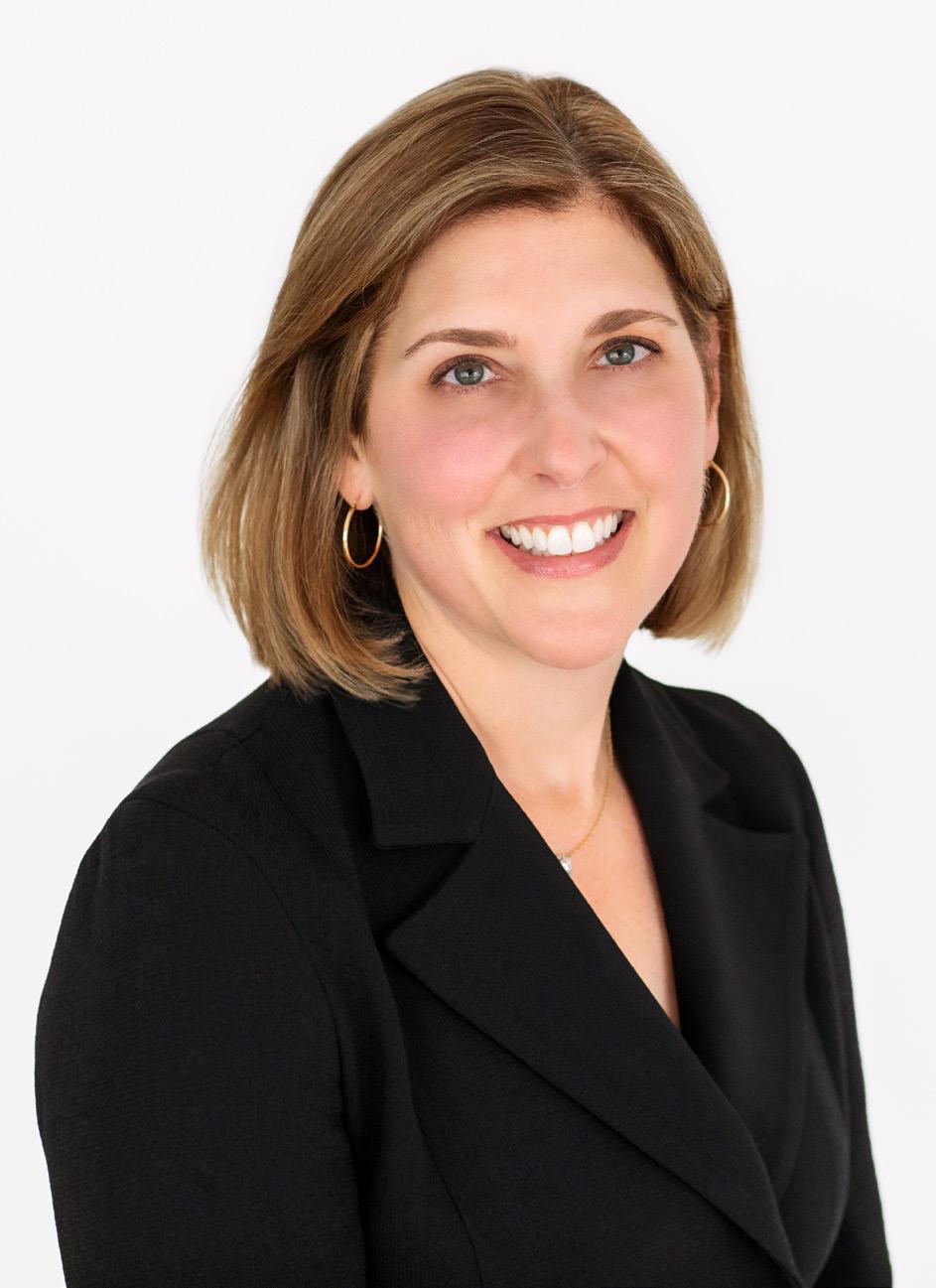
◀ P84
Illumina’s Roland Schwillinski and Jennifer Pascua break barriers between IP and litigation teams
P90
Eboneé Lewis uses her platform at Becton Dickinson to bring visibility to BIPOC employees and uplift others
P96
At GE Healthcare, Christian Krautkramer puts ethical decisionmaking and his team at the front of his strategy
P100
Shaped by his time in the Air Force, CIO Kelly Summers guides his team through any challenge
◀ P108

Director, Creative Production
Kevin Warwick
Managing Editor
KC Esper
Senior Editor
Frannie Sprouls
Editors
Melaina K. de la Cruz
Sara Deeter
Julia Thiel
Hana Yoo
Staff Writer
Billy Yost
Journalism Resident
Abigail Sutter
Contributing Writers
Zach Baliva
Dan Caffrey
Lucy Cavanagh
Luke Fraber
Frederick Jerant
Natalie Kochanov
Keith Loria
Logan Lafferty
Lindsey Lubowitz
Javanna Plummer
Clint Worthington
Senior Designer
Vince Cerasani
Photo Editors & Staff Photographers
Cass Davis
Gillian Fry
CORPORATE
CEO & Publisher
Pedro A. Guerrero
Chief of Staff
Jaclyn Gaughan
President, Group Publisher
Kyle Evangelista
VP, Hispanic Division
Head of Audience & Engagement
Vianni Lubus
VP, Finance
David Martinez
Director, Client Services
Cheyenne Eiswald
Senior Client Services Manager
Rebekah Pappas
Client Services Manager
Brooke Rigert
Director, Talent Acquisition
Elyse Schultz
Senior Talent Acquisition Manager
Jacqui Bergman
Haylee Himel
Director, Strategic Partnerships
Krista Horbenko
Director, Events
Jill Ortiz
Digital Events & Marketing Coordinator
Ashley Parish
Senior Director, Sales
Ben Julia
Director, Sales
Kelly Stapleton
Director, Sales Training & Development
Alexa Johnson
Sales Training Manager
Justin Davidson
Content & Advertising Managers
Megan Apfelbach
Ahmad Douzali
Cameron Macko
Kelly Stapleton
Drew Thomas
AHL Magazine® is a registered trademark of Guerrero, LLC.
Facebook: @ahlmagazine
LinkedIn: @american-healthcare-leader
Twitter: @AHL_Magazine
©2021 Guerrero, LLC guerreromedia.com
770 N. Halsted, Unit 307 Chicago, IL 60642
Reprints
Reprinting of articles is prohibited without permission of Guerrero, LLC. Printed in China. For reprint information, contact Reprints & Circulation Director Stacy Kraft at stacy@guerreromedia.com.
Admittedly, I’m not a Cubs fan, and I’ve only ever walked by the field one other time on my way to get Jeni’s ice cream. This COVID-19 vaccine was my one and only reason to go and experience the historic field.
When I made the appointment, I didn’t know what to expect. I kept having mental images of rounding the bases and sliding into home plate, while a nurse decked out in catcher’s gear stood waiting with a needle, ready to inject it into my arm. I imagined clinking plastic cups of warm, draft beer with other vaccine-getters to celebrate our inoculations. It would be a party. And, honestly, it kind of was.
The day I showed up to my appointment, there was a baseball game happening. The bustle and excitement from the crowd were palpable, even as I stood in a line just outside the stadium with about a hundred other people eagerly waiting for our vaccines to be administered. When it was finally my turn, I sat in a semicircle with seven other people in a converted conference room—our group was one of six in the room. A nurse stood in front of us and asked about allergies and anxieties, then informed us about side-effects and second doses. We all nodded our heads and offered up our nondominant arms.
In a matter of twenty minutes, it was all over, and though we didn’t clink celebratory cups of beer, we all sighed a breath of relief and left knowing we’d probably see each other in three weeks for our second doses. As I left the stadium, it was clear to me that this experience was healthcare done like never before. It was fast, casual, exciting, and completely unconventional.
It’s safe to say that 2020 and 2021 offered healthcare the opportunity to shine. Telehealth was used universally, and the advancements in its capabilities between March 2020 and now are exponential. Several new vaccines were produced and distributed in record timing, showing novel pathways for innovation, discovery, and healing. An emphasis on mental health and the social determinants of health is at an all-time high. And data can now be leveraged to pinpoint successes and failures in population health.
This issue showcases the people who see opportunities for innovation in healthcare and strive to make new technologies, methods of thinking, and ways of working a reality. It celebrates the people who say “absolutely” to creating something as farfetched as turning a baseball stadium into a max vaccination site. And it’s that kind of thinking that not only saves lives in the long run but also creates hope for the future and the pioneers of tomorrow.
KC Esper Managing Editor
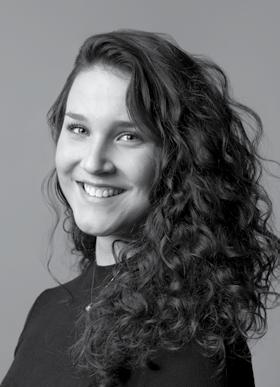


In an industry as dynamic as healthcare, keeping up with new technologies and practices is half the battle. These six executives have mastered—and leveraged—that skill.
Desert Horse-Grant and her UCLA Health team stand at the intersection of science, technology, and business to help bring new technologies from lab to market
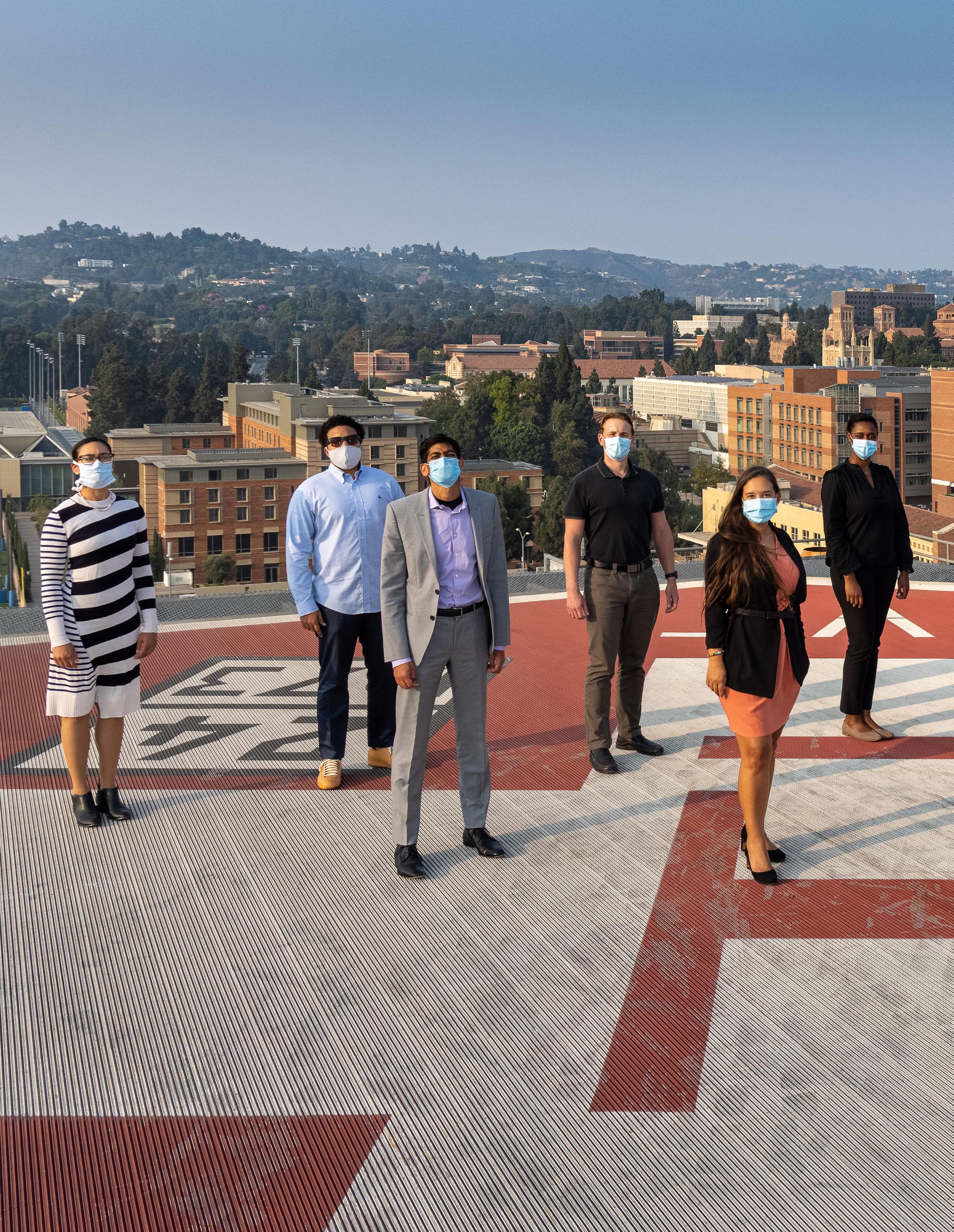 By Zach Baliva Reed Hutchinson
By Zach Baliva Reed Hutchinson




in patient outcomes go hand in hand. Each year, healthcare innovators introduce techniques that once seemed impossible. Doctors use 3-D virtual reality models to prepare for surgery, experimental brain implants bring visual perception to the blind, and artificial intelligence helps pathologists diagnose breast and prostate cancer faster than ever before.
It’s all happening at UCLA Health, California’s top hospital and one of the best in the nation. Desert Horse-Grant is the organization’s chief of innovation. She works behind the scenes to identify, develop, and introduce healthcare’s next breakthrough. “When medicine, business, and engineering come together, something truly special can happen,” she says. “That’s the kind of innovation we’re looking to facilitate.”
Horse-Grant has a track record of working with scientists and inventors to coordinate clinical trials and bring new products to market. She spent the first thirteen years of her career at the nation’s leading cancer and research centers, including New York’s Memorial Sloan-Kettering Cancer Center, where she
was instrumental in developing a pioneering cross-disciplinary brain tumor center. Horse-Grant joined UCLA in 2017 to create the pathways that bring discoveries out of the laboratory and into the clinical setting.
In 2019, Horse-Grant joined forces with UCLA faculty member Jennifer McCaney, a Fulbright Scholar with a PhD in mechanical engineering and an MS in biomedical engineering. Together, the partners in innovation created UCLA Biodesign, a unique program that unites the medical community with industry stakeholders to develop and implement novel technologies while simultaneously training the next generation of healthcare innovators.
UCLA Biodesign operates a year-long fellowship that places engineering, medicine, design, and computer science professionals at the front lines of healthcare innovation and gives them access to UCLA’s vast clinical and health IT resources. The “discovery fellows” form interdisciplinary teams that embed in the UCLA Health System.
“We give them a pair of scrubs and a notebook and invite them into our environment to observe. They’re using their impressive backgrounds and top

training to generate hundreds of ideas of improvements,” HorseGrant explains. Then, the program’s leaders apply design thinking principles to greenlight ideas for the engineering phase.
In 2020, UCLA Biodesign’s discovery fellows were working in neurointerventional radiology, hoping to develop new solutions for doctors treating stroke and brain tumor patients. But when the coronavirus pandemic hit, they chose to pursue rapid innovations to stop the spread of COVID-19.
By March of 2020, industry experts warned of a possible shortage of lifesaving ventilators used to treat COVID patients. The medical devices—which can cost up to $50,000 each—were getting scarce. UCLA Biodesign Discovery fellow and engineering graduate student Glen Meyerowitz asked UCLA Health clinicians to teach him about treatment protocols and device functionality. In less than one week, Meyerowitz created a working low-cost ventilator prototype using only parts from a local hardware store. The device is set to go through testing and an Institutional Review Board (IRB) study as required by
“Innovation is part research and part technology development, but it’s also about doing things that matter to your community. We can be innovative in our approach by making sure everyone has fair and equal access to healthcare.”
FDA regulations, but could be mass produced for $1,000 per unit.
Ventilators weren’t the only device in short supply at the start of the pandemic. Like most health systems, UCLA Health needed more nasopharyngeal swabs for COVID-19 testing. UCLA Biodesign fellow Gabriel Oland, MD, tabled his original project (a noninvasive intracranial pressure monitoring device) and instead worked with Horse-Grant and the manufacturers to design and produce 3-D-printed, medical-grade swabs. Before the end of April 2020, UCLA Health completed clinical testing according to FDA guidelines and received institutional IRB approval to use the 3-D-printed swabs.
As current UCLA Biodesign fellows set out to bring innovation to the Pulmonary and Critical Care Division at UCLA, Horse-Grant is creating additional programs and looking for other opportunities to drive innovation forward. The UCLA Health Innovation Challenge launched by Horse-Grant provides awards of up to $50,000 to faculty, staff, volunteers, patients, students, and others who create ideas that scale health equity, design solutions that solve clinical needs, or address problems related to financial sustainability and wellness.
The area of health equity is of particular importance to Horse-Grant. “Innovation is part research and part technology development, but it’s also

about doing things that matter to your community. We can be innovative in our approach by making sure everyone has fair and equal access to healthcare,” she says. Horse-Grant served as cochair of a national search committee that hired UCLA Health’s first chief of health equity, diversity, and inclusion. The executive position is among the first of its kind and will help UCLA Health increase access to underserved populations and diverse communities.
Over the past decade, Los Angeles has benefited from the rise of Silicon Beach. Horse-Grant has advocated for UCLA Health to have an innovation strategy at the convergence of medicine and tech. Google made headlines when

it opened a nearby hub in Venice, California, in 2011. Since then, other leading tech companies have followed. The area is now home to a thriving tech scene anchored by major players like Hulu, YouTube, Facebook, Apple, Snapchat, and hundreds of savvy start-ups.
“The tech leaders, investors and healthcare innovators are all in Southern California, and we can work together to bring important developments to the world,” Horse-Grant says. She and McCaney received a federal grant of $1.5 million to build a regional hub to partner with these local tech companies for the development of medical technology and digital health tools.
When asked what all of these efforts will produce, Horse-Grant points to technologies that have spun out of UCLA. She recently was given space to be redesigned for the first Health Innovation

Laboratory (iLab), where UCLA Biodesign trainees and other healthcare transformers can invent and reimagine care with innovative methods, design principles, and medtech knowledge.
“This is a place where architects, designers, engineers, and medical healthcare professionals can engage with technology to help create better designs for increased healing and more individualized care,” she says. “It’s where trainees could invent wireless devices to monitor patient vital signs without invading their privacy, and where machine learning algorithms could help providers develop treatment plans and predict crises.”
In 1956, UCLA doctors performed the first open-heart surgery in the Western United States. Since then, the organization’s renowned researchers and healthcare providers have developed techniques for fetal monitoring, set the international standard for tissue typing, helped create CT and PET scan technology, performed the nation’s first shoulder replacement, pioneered stem cell harvesting methods, developed vaccines, created new products, and won both the National Medal of Science and the Nobel Prize.
Now, Horse-Grant’s initiatives have provided the next leg of UCLA Health’s journey. And with UCLA Biodesign, that legacy of innovation can move into the future. AHL
“This is a place where architects, designers, engineers, and medical healthcare professionals can engage with technology to help create better designs for increased healing and more individualized care.”
At ConnectiveRx, Julia Laurin and her team centralize the patient during the healthcare journey, developing solutions that cut through red tape and make starting and staying on medication easier
 By Dan Caffrey
By Dan Caffrey
 Portraits by Rob Larson
Portraits by Rob Larson
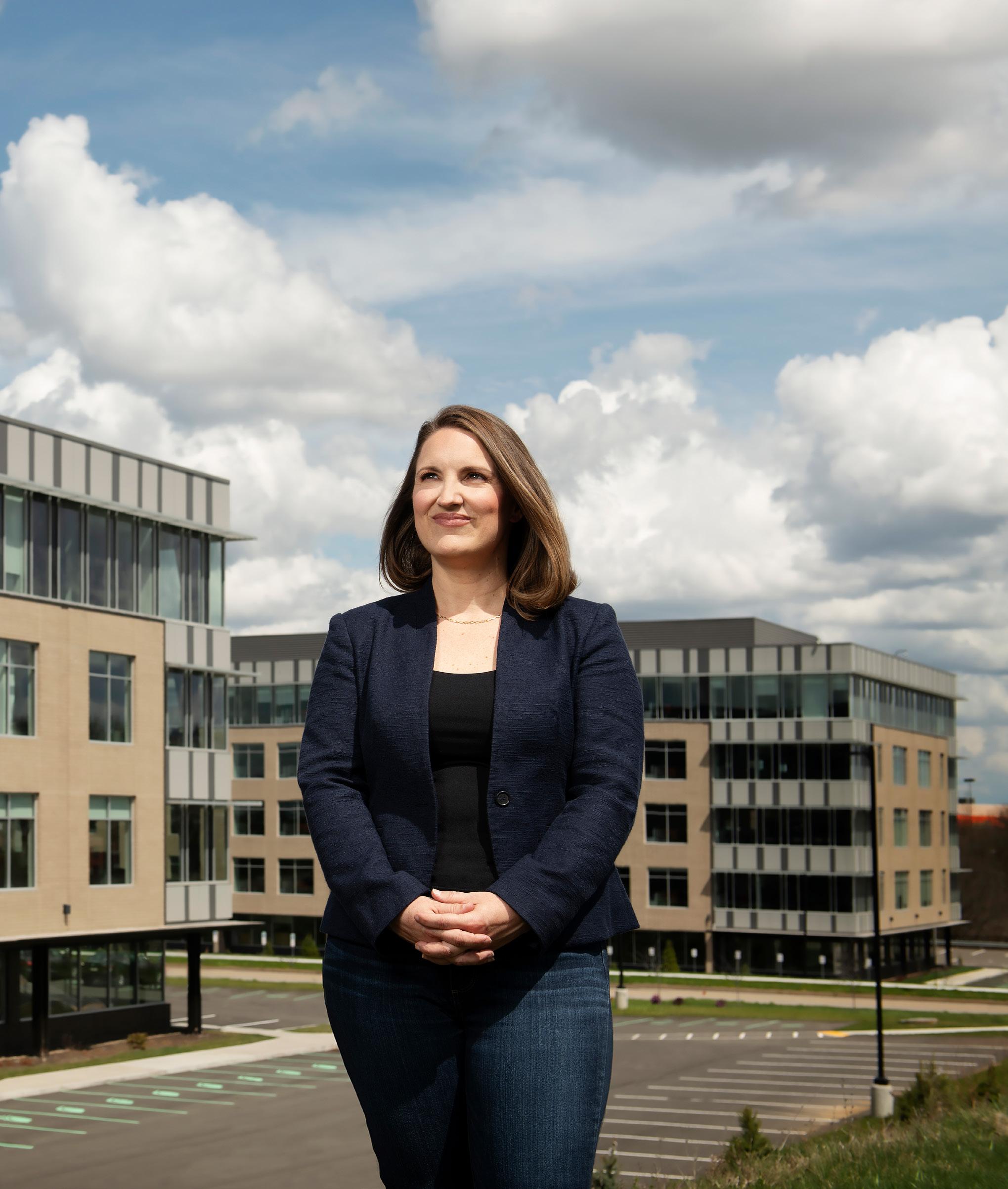

ConnectiveRx in 2018, it was her first foray into the healthcare industry. And yet, her current work as chief product officer is part of a thread that’s been consistent throughout her decade-long career in product management. Before she found her niche, however, she was on a different path.
Laurin attended the University of California, Berkeley School of Law and entered the workforce as a litigation associate. She loved how analytical the practice of law was, but she was less drawn to the adversarial nature of the field. Then she discovered product management. Suddenly the empathy she felt toward her clients as a lawyer was an asset, allowing her to tap into the needs of users and customers to fuel transformative innovation.
“Before [ConnectiveRx], I was helping to revolutionize analytics for university librarians,” Laurin says of her previous time at Thomson Reuters. “There’s something I love about taking these antiquated workflows that really haven’t been disrupted or revolutionized yet, then seeing how we can bring the best of data, technology, and tools into these areas.
“On one hand, the healthcare system produces miracles for patients—COVID vaccine distribution is an example of the system coming together to operate what felt like the speed of light,” she continues. “On the other hand, I spend a lot of my day figuring out how to grapple with the insistent ubiquity of fax machines—it’s still the number one way many doctors communicate, and I need to meet our healthcare partners where they’re at.”

Per its name, ConnectiveRx is a technology-enabled services company that, through collaborating with biopharmaceutical manufacturers, comes up with solutions that make it easier for patients to access and afford medications. Laurin’s role comprises a wide slate of responsibilities—namely developing product strategy

and innovation road maps, assessing the market, and leading user validation, all while focusing on developing products that patients will actually use and benefit from.
“We’re always talking to specialty patients,” she says. “We actually have them draw out their own patient journey—everything from the advent of symptoms to diagnosis and actually getting therapy.”
Laurin describes the process as revealing a perseverance in patients that’s both moving and humbling. It can often be months or even years between the onset of symptoms and when someone actually gets the medication they need. It’s the product management team’s job to discover ways that ConnectiveRx can clarify and shorten the wait period.

“It’s highly individual in some ways,” Laurin says. “We really look at the therapeutic class, whether it’s a chronic condition or a very acute one. And then we start to design multiple patient journeys and imagine all the scenarios and obstacles we need to anticipate and
neutralize. Sometimes, it’s through a specialty pharmacy. Sometimes, it’s through a retail pharmacy. Sometimes, it’s at the hospital or doctor’s office.”
Julia Laurin Chief Product Officer ConnectiveRxThrough their findings, Laurin and her team have identified three themes that arise with most patient journeys. First, patients want to feel informed and in control of their own healthcare, which they often find difficult due to a perceived lack of transparency. Second, they want to have a detailed understanding of their cost and benefit coverage. Citing the transparency issue once again, Laurin explains that it can be hard for many of them to know how much is being covered by insurance and how much will be out of pocket. And finally, there can be a number of added hurdles once the product actually arrives. For instance,

if a medication has to be injected, Laurin notes how scary of a process that can be for a patient who’s never self-administered.
To address these issues and make the patient journey easier, the product management team has come up with two solutions that Laurin is especially excited about. Remarkably, some of the best products are the ones that work behind the scenes and are more or less invisible to patients. Copay ePA, an automated process designed to streamline and expedite prior authorization, is a great example of an “invisible innovation” that neutralizes potential patient access obstacles completely behind the scenes.
“Prior authorization has become a major burden for patients and healthcare providers, and is increasingly being required by payers,” Laurin says. “It just adds a lot of complexity to already swamped HCP [healthcare provider] processes. So, we modernized it through some smart technology and great partnerships with industry leaders such as Surescripts. That enabled us to automate the prior-authorization process and get a patient onto therapy more quickly. They get to access their prescription without even being aware that there’s this underlying friction being resolved between the doctor’s office and the payer.”
The end result is that a patient gets to leave the pharmacy with medication in hand while everything gets sorted out without them having to worry about it. The innovation earned ConnectiveRx a PM360 Trailblazer Award just last year.

The second product solution Laurin cites is mobileCare Manager, a solution that patients can actually hold in their hand. A mobile platform built by HelpAround for specialty patients, she describes the tool as one that can be completely embedded into a person’s lifestyle.
“When I first joined ConnectiveRx, we had a thriving patient support business where we were laser focused on helping doctor’s offices, but we didn’t have a lot of ways to directly interact with patients,” she says. “We really loved what we saw with HelpAround—they developed this whole digital experience catered directly to the specialty patient. It’s not just a pill reminder. It’s about the special needs of patients on these chronic medications. It’s designed to help them really assimilate their treatment into their lifestyle. Everything can be accessed on their smartphone.”
Most conveniently, mobileCare Manager is multichannel, meaning that, while patients can download it as an app if they’d like, they can also access it through standard SMS or through a secure mobile web experience. “If we meet the patient where they live their lives, then we can more successfully help integrate their treatment into their day to day,” Laurin explains. “That supports adherence, which means healthier and happier patients.
“From a product perspective, it’s ultimately about the patient,” she continues, referring to mobileCare Manager, but also ConnectiveRx’s mission as a whole. “It’s the patient who is the end user. It’s the patient who we’re helping, and we never lose sight of that.” AHL
“[Patients] get to access their prescription without even being aware that there’s this underlying friction being resolved between the doctor’s office and the payer.”
Deborah Liben helps Bristol Myers Squibb make waves in hematology medicines and cell therapy options alongside her new team

 By Clint Worthington
Lia Jay
By Clint Worthington
Lia Jay

(BMS) announced it was acquiring Celgene Corporation in January 2019, Deborah Liben had only been at Celgene for two weeks. But after the deal closed in November 2020 and the pharma giant sought to incorporate Celgene’s pioneering products, it tapped Liben to help head the legal strategy for development and commercialization of new cell therapies.
It may sound complicated, but it’s a task that came naturally to Liben, who’s worked in-house in the pharmaceutical industry since 2015 after spending eight years at law firm Kaye Scholer (now Arnold & Porter). Before Celgene and BMS, Liben spent three years as pharmaceutical counsel at Novartis, where she worked on a number of hematology and oncology products and advised on patient support programs across the company’s robust oncology portfolio.
It was that work that led her to join Celgene, which was at an exciting point in
Deborah Liben VP and Assistant General Counsel for Worldwide Hematology & Cell Therapy Commercialization & Development Law Bristol Myers Squibbits history as it was vastly expanding its hematology portfolio, including in cell therapy. Liben is enthusiastic to take on any challenge to help move forward.

As a Celgene lawyer leading a team at BMS, part of Liben’s job involved handling the integration of the cell therapy legal team into BMS, which was complicated enough before the COVID-19 pandemic threw in even more challenges. As the timeline for launch preparations for the company’s two CAR T launches coincided with the integration of the two companies—and not to mention the overall uniqueness of cell therapy which BMS was first learning— Liben quickly got to work to make these big goals attainable.
Surprisingly, Liben notes that the switch to remote communication and meetings during the pandemic made aspects of the integration easier. Rather than feeling the long distance between Celgene’s Summit, New Jersey, offices and BMS’ Princeton and Lawrenceville offices, switching to virtual communication actually put everyone on equal footing of engaging remotely and helped them remain engaged throughout the process.
In order to get the legal teams from both companies acquainted, Liben suggested hosting virtual meetings that would also feature breakout sessions
where individual members could do quick meet and greets. “We do a lot of things as a group, but it’s not always easy to meet people,” she says. These oneon-one sessions will give the team a more structured way to expand everyone’s networks—useful connections to help Celgene lawyers integrate and gain alignment in legal advice being provided across the BMS portfolio.
Much of Liben’s early work in the integration also involved educating new colleagues in the BMS law department about CAR T products and the nuances of the business and legal considerations associated with them. “BMS has a really strong history, especially in unique therapeutic areas and technologies,” Liben explains. “This helped our new legal colleagues find easy frames of
reference and allowed them to more readily think outside the box in the way these cell therapies require.”
Two of BMS’ most exciting products in hematology are CAR T therapies, which use specially altered T-cells to fight cancer. These products include Breyanzi (previously referred to as lisocel), which recently received FDA approval, and ide-cel, which is still under FDA review. BMS is only the third pharmaceutical company to have an approved CAR T cell therapy, with Breyanzi being only the fourth product of its kind to receive FDA approval.
For Liben, working on these exciting new products offers her a chance to chart new territory. Because CAR T and other T-cell therapies have only recently received FDA approval, she’s in the unique position of helping drive important decision making while using the best
“How can we help patients and doctors to support safe use of our products? Because these products are obtained directly from BMS, as the manufacturer, we take on new responsibilities.”
aspects of each heritage company and uniting them to accomplish more.


“We’re really starting at the ground floor,” she says of her team. “We always talk about thinking outside the box, but this is supercharged outside of the box. We sometimes joke, ‘Can we just go back inside the box?’”
So much of her team’s job involves navigating the legal risks of such new products, but also the reputational risk involved in bringing these personalized treatments to patients. This requires a lot of careful risk management and decision-making, which Liben relishes.
“Deb has been critical to BMS’ efforts to bring novel gene therapy treatment options to market and ensure access for patients,” says Michael Labson, partner in Covington’s Food, Drug, and Device practice. “It has been a privilege to partner with Deb and BMS.”
In addition to the legal challenges, Liben and her team also have to consider the supply chain logistics that these new products require. Pharmaceutical supply chains are already complicated on their best days. Normally this refers to a relatively straightforward path from BMS to wholesale distributors to pharmacies to patients. With CAR T, “We’re like spokes in a wheel because we have interaction with the patient and the healthcare provider every step of the way,” Liben explains.
From a legal perspective, the nuances of the supply chain for autologous therapies raise many legal considerations, such as around patient privacy, cell ownership, and doctors’ ability to practice medicine based on their independent clinical judgment. “How can we help patients and doctors to support safe use of our products?” Liben poses. “Because these products are obtained directly from BMS, as the manufacturer, we take on new responsibilities.”
Since January 2021, Liben took over as vice president and assistant general counsel for worldwide hematology and cell therapy commercialization and development law. She now oversees a team of eleven providing legal support for the entire BMS hematology portfolio. BMS has many exciting products to offer patients and healthcare providers, with more new modalities working toward FDA approval in hematology in the coming year. “There’s so much coming, and all of [the products] will bring their own unique considerations and challenges,” Liben notes.
Luckily, these new technologies will be released during a time when the public is hungry and excited for new medical solutions. And under Liben’s leadership, the hematology legal team will be there to support every step of the way. AHL

 By Dan Caffrey
By Dan Caffrey
of an executive’s career, we often turn to the time-tested metaphor of a ladder. But Funso Olufade prefers to think of his own path as a swing, launching him through the air from one opportunity to the next and being brave enough to embark on new challenges. “Even the risk of failure is a learning opportunity,” he says.
Although Olufade is chief financial officer for the global pharmaceutical company Cipla Therapeutics, he views his journey so far as being much different from other CFOs in his industry. He is not a CPA, and for most of his undergraduate studies at Rutgers University, he majored in biochemistry before switching to economics and eventually earning his MBA from Fairleigh Dickinson University.
Unlike most CFOs, he has a PhD from at Rutgers University’s Bloustein School of Public Policy, where he also guest lectures. He has had roles in finance, brand management, business development, and operations. Though, his first job out of undergrad was not in pharmaceuticals nor healthcare but in the beverage industry.
“I started at Coca-Cola,” Olufade notes. “The angle I worked with them was how do we transition the
 Funso Olufade
CFO
Cipla Therapeutics
Funso Olufade
CFO
Cipla Therapeutics
portfolio from a carbonated soft drink to something that was healthier, which ended up being the fruit juices.”
There was a deeply rooted desire to one day break into an industry more closely related to healthcare. Growing up in both Ilewo—a sub-rural village in southwest Nigeria— and Union County, New Jersey, Olufade witnessed the rampant inequities in his communities when it came to access to hospitals and medications. He often wondered, “Why were those with less always left to pay more?” The disparity was further enforced by his father, a physician who trained in Nigeria before his family came to the US.
“He’d talk about the divide in Africa between the haves and the have-nots,” Olufade says. “It’s a country where there’s about a 70 percent poverty level, and close to 90 percent of healthcare is
out of pocket. I realized as a young child that there needed to be a bridge between healthcare delivery and the financing of healthcare. Hospitals do not have to be bankrupt.”
Olufade got the chance to work at a company that strives to make such a difference in 2004, when a recruiter from Bayer Pharmaceuticals reached out to him. He wound up working in their sales and marketing analytics department for four years.
“Within Bayer, I saw a pharmaceutical company that catered to a lot of therapeutic areas, but always kept the patient at the core of what they did,” he says. “That’s one thing that I’ve looked for in companies that I’ve work for since—this compassion for patients.”
In keeping with his swing metaphor and with support of great mentors,
Olufade eventually found himself launched overseas after joining global pharmaceutical company, Sanofi (then Daiichi Sankyo). As the director of commercial strategy at Daiichi Sankyo Europe, he made a whirlwind journey to thirty European countries in thirty-six months, which allowed him to deepen his fascination with how healthcare works around the world. Whether he was in Norway or Greenland or South Africa (admittedly on a different continent, but still defined as Daiichi Sankyo’s European market), he would visit as many emergency room departments as he could.
“During my morning walks, I’d say ‘Let me see what it’s like there,’” Olufade recalls. “Sometimes, I’d be greeted by a policeman in front of a hospital, who would ask ‘What are you looking for?’ I would walk into pharmacies and ask them questions like, ‘What medicines are available over the counter versus needing a physician prescription?’
“It is just part of this learning and continued growth and development that completes me,” he continues. “That perspective enabled me to better understand how healthcare systems are set up and what makes them sustainable. They’re all different and have their own individual nuances.”
Olufade joined Cipla in 2020 after being offered the opportunity to greatly expand the Indian-based company’s financial capabilities.
“They were very new to the United States,” he explains. “With the team,

“How can we deliver aid effectively in underserved regions? How can we engage all stakeholders on the regional threats of those uncared for around the world? Health equity requires inclusiveness.”
we’ve incorporated the organization and have been able to build the infrastructure for specialty-branded business for Cipla Therapeutics in the US.”

Although relatively new to the States, Cipla has an eighty-five-year history of equitably manufacturing and distributing medications across the globe. Cipla was one of the first companies to manufacture medications to treat AIDS back in 1985, and in 2001, it provided antiretrovirals for HIV treatment at a fraction of the cost compared to other pharmaceutical companies.

Content as he is in his career, Olufade extends his passion for equitable healthcare to corners of his life outside of the office. There is the American College of Healthcare Executives of New Jersey (ACHENJ), where he sits on the board as chair of diversity and inclusion. He describes ACHENJ as a professional networking group made up of hospital administrators, drug manufacturers, providers, payers, and policymakers, all of whom work together to raise awareness about healthcare inequity and provide an opportunity for lifelong learning in addition to partnering with local charities such as food banks and patient advocacy groups.
Then, there’s Devoted Skies. Olufade founded the New Jersey-based nonprofit about a year ago with the intent of providing lower- to middle-income countries with broader access to modern healthcare. He describes their approach as three-tiered: partnering with local organizations in the respective countries
they are trying to reach, researching the most effective ways to provide care, and developing a tangible model of how to actually deliver it, whether it’s in-person medical supplies or teaching international citizens where to find healthcare resources locally.
Right now, Devoted Skies is still in the research phase, having collaborated with nongovernmental organizations in Paraguay, Rwanda, Nigeria, and elsewhere to gather information, with the hopes of executing their first mission in fall 2021, depending on the state of the COVID-19 pandemic. He asserts, the hypercollaboration between all healthcare stakeholders cannot be overstated in tackling the challenges of modern care delivery.
“In 2021, we need to start to close some of these gaps, and that’s the premise behind this,” Olufade says. “How can we deliver aid effectively in underserved regions? How can we engage all stakeholders on the regional threats of those uncared for around the world? Health equity requires inclusiveness.” AHL
“A vital strategic element of leadership is knowing where to focus staff and when to seek an experienced partner for support. Prescription Analytics provides a highly disciplined, client-centric approach to government contract management for Funso and Cipla. We’re proud of our long-term relationship.” –Mark Patton, CEO
The pressure on you to get government pricing computations right is immense. Because getting them wrong can be incredibly costly, and hamper your ability to make good strategic decisions. We can help. Call Mark Patton at 262.297.3007.

While the world screeched to a halt, Anthony Lange and Virtusa Corporation hunkered down to develop a richer virtual healthcare experience
By Dan Caffreypeople have referred to 2020 as “The Great Pause,” and will likely remember it as such: a year when life as we know it screeched to a halt as we all grappled with the COVID-19 pandemic. A time to mourn. A time to reflect. A time to wait.

But for certain industries, 2020 was the opposite. It was a year when research and development sped up in an effort to respond to new obstacles created by the novel coronavirus. A time to experiment. A time to rigorously focus. A time to keep one’s nose to the grindstone. For Anthony Lange, senior vice president and head of healthcare and life sciences at Virtusa Corporation, “The Great Acceleration” would be a more accurate moniker.
Virtusa guides its clients toward executing successful end-to-end digital business transformation services, and
as Lange points out, he was starting to see companies begin to flirt with the digitization of healthcare before COVID-19.
“Pre-pandemic, there was a little bit of telehealth,” says Lange, also touching on companies that wanted to prove the worth of their data-collecting medical devices.
“I think everyone was talking about it, dabbling in it, doing research, a little bit of development. And we were seeing an uptick in contracts associated with value-based care. But from my perspective, there was not widespread adoption.”
Of course, when March of 2020 rolled around, telehealth suddenly became the rule rather than the exception. “More people started using telehealth because they had to,” Lange says. “The explosion is well-documented. But right now, it’s still a fairly one-way communication where the physician is asking questions. I see our customers wanting to provide a much richer remote experience for patients.”
As an example, on the patient end, Lange brings up his eighty-five-year-old mother, who has had a handful of virtual doctor’s visits since the pandemic began.
“I’m not sure they were overly valuable for her,” Lange says with a laugh. “But imagine if there was a simple
“Healthcare is so personal, and organizations across the healthcare ecosystem need to do everything they can to give consumers, patients, and members a compassionate, personalized, and seamless experience during every point of contact. However, too many aspects of the healthcare journey continue to be confusing and disjointed, and the industry still struggles to provide frictionless end-to-end experiences. Using a fully unified suite of healthcare applications provides a more collaborative, transparent environment that will not only make it easier to interact with patients and members, it will—most importantly—help create better health and business outcomes.”
device that could connect to an iPad while checking her blood pressure and other vitals, then share the data with the doctor while he’s talking with her. Then we’ve got something.”
Every day, Virtusa is developing technological advancements to deliver the kind of expansive remote healthcare experience Lange and his team envision. The company’s initiatives have only sped up since COVID19 changed the world.
“My team and I have never worked so hard,” says Lange, noting that the workload became even heavier as they had to contend with the logistical hurdles that came with moving three-thousand people from an office to working completely at home.
Obstacles aside, the team remained focused on six core principles that guided all of their technology. First, the remote healthcare experience needs to be virtual and personal. Second, resiliency across the board—in everything from supply chains to adapting to the pandemic and what life will look like once it’s over. Third, building capability (i.e. cross-training Virtusa’s employees on the new technologies being created).

Fourth, utilization of data—how to share it safely and appropriately in a way that helps the patient and Virtusa’s clients. Fifth, driving a better experience and taking out the friction for everyone involved collaborating with Pega. And sixth, acceleration to the Cloud, including the modernization of existing applications and platforms, and making them more accessible and available.
All six of these principles have gone into the development of vLife, a Cloud-based platform on Amazon Web Services that provides technology enabled tools
—Dave Irish, VP of Sales for Healthcare & Life Sciences, Pega Systems
“Right now, [telehealth is] still a fairly one-way communication where the physician is asking questions. I see our customers wanting to provide a much richer remote experience for patients.”
to the healthcare industry built in partnership with companies like Pega. Thanks to a clinical data lake of 815 billion health records, Virtusa’s clients can conduct population health analysis, track disease progression, and even make predictions across four key therapeutic areas: orthopedics, oncology, type 2 diabetes, and renal disease.
But Lange recognizes that an enhanced virtual healthcare experience doesn’t just rely on new technology. There also needs to be a complete overhaul of current reimbursement models.
“I think that’s what everyone’s trying to figure out right now,” he says. “And it’s really tricky. Personally, I think value-based care is the answer, rather than an encounter-based model.” He ponders what an alternative model would look like if large tech companies were the ones paying practitioners. “Imagine Amazon saying, ‘Here’s Amazon Health,’ just like there’s Amazon Prime. You pay monthly or annually for a certain amount of always-available health services or advice. You purchase medical devices and medications on Amazon, connected to your doctor. I think there’s a model there somewhere from a subscription perspective.”
In keeping with his earlier remarks, Lange concedes that this is pure speculation. There’s no one person or organization that currently has the answer for a new reimbursement model. But he believes that finding one is equally as important as developing technology in the vein of vLife that makes for a richer healthcare experience for all involved—not just patients, but practitioners and payers, as well. He also doesn’t think the need will go away once the pandemic is over.
“I’ve read a lot about what happened after the 1918 Spanish Flu,” he says. “It took a while for things to get back to normal, and even then, it wasn’t completely the same. And I think we’ll see that here. It won’t be like the during pandemic, but it won’t be exactly like it was before the pandemic, either. I don’t think we’re going back to where we were.”
But with the plans on Lange’s drawing board, maybe we can move on to something better. AHL

“As Anthony Lange has rightly put forward, ‘Enhanced virtual healthcare experience doesn’t just rely on new technology. There also needs to be a complete overhaul of current reimbursement models.’ It is essential that we should delve beyond the surface and put consumers at the center. The preponderance of siloed solutions could just be adding more noise. We must get better at interrogating the consumer experience (CX) and move beyond the norms of incremental solutions. There is no easy path and no silver bullets—it requires strong leadership, commitment, and a willingness to make lasting consumer relationships.”
—Vaibhav Srivastava, SVP of Client Services, Virtusa CorporationWhat it means to rethink human resources and how Uzair Qadeer is leading the way

 By Zach Baliva
By Zach Baliva
Portraits by Steph Larsen

the workforce is becoming remote, and expectations of talent and organizations are changing at an astounding pace. During this transformation— accelerated by the pandemic—HR has its moment.”
That’s how Uzair Qadeer summarizes 2020. Qadeer is hard to categorize. He has degrees in liberal arts, engineering, and business. He’s lived in four countries. He speaks five languages. He’s been a professor, a consultant, and an executive. He’s worked on a factory floor, started his own business, and built best-in-class diversity and HR functions.
Qadeer’s résumé is dotted with leading names like Rutgers University, Bristol Myers Squibb, and Deloitte. Today, Qadeer is chief diversity officer at Alexion Pharmaceuticals. He reports directly to the CEO and is a member of the company’s management team. He joined Alexion in 2019 to implement an HR model that connects employee and
patient experiences. Doing so, Qadeer says, will help take patient care to the next level.
“HR is changing everywhere. If we pivot accordingly, the workplace of the future will be ripe with passion, purpose, opportunity, and improved outcomes for customers,” he explains. It is a bright outlook, but Qadeer is an optimist. In fact, he’s more than an optimist—he’s agile, disruptive, and innovative. He is a human resources futurist.
So, what exactly is a human resources futurist?
Qadeer says futurists marry expertise with intuition to seek, discover, and implement industry-changing breakthroughs others might miss. “Historically, HR leaders rely on traditional skills, processes, and systems,” he explains. “Futurists change old ways of thinking to create communities of experts from disparate fields that can, together, offer something new.”
Qadeer believes that approaches rooted in the past cannot deliver solutions for tomorrow. “We need to separate trends from fads but also see patterns while they are forming so we can shape them into leading-edge approaches,” he says.
To illustrate his point, Qadeer borrows a familiar analogy from the world of team
“The world is getting automated,


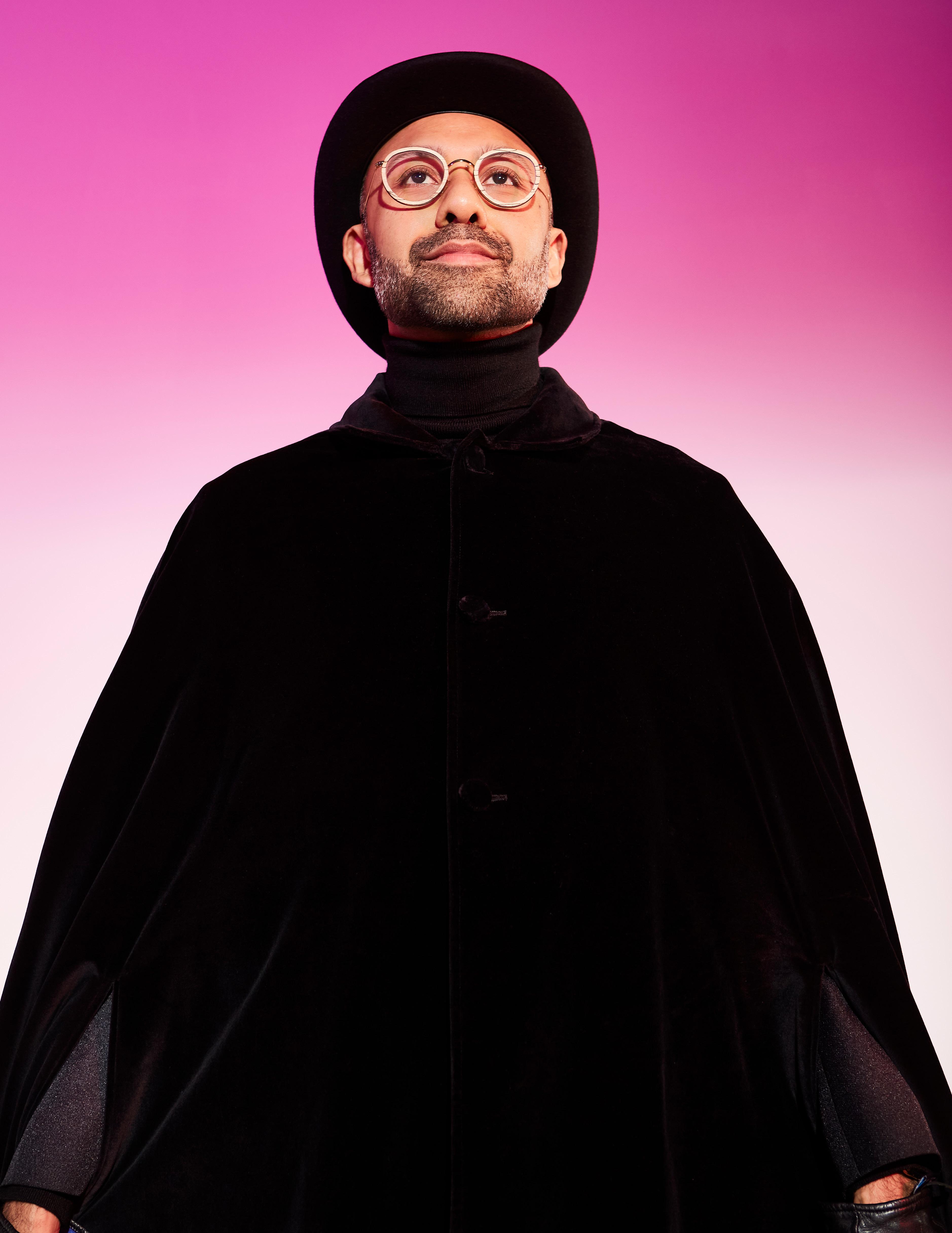
sports. “People in HR are often skating to the hockey puck, and by the time they get there, it’s gone,” he says. Qadeer says HR leaders need to look beyond benefits and employee relations and instead look to AI and automation.
“It is our job as HR leaders to design the organizations of tomorrow and incubate skills of the future. To do so, we have to build a strong futurist orientation and serve as business leaders with an HR focus, not the other way around,” Qadeer explains, pointing to ROSS, an automated, AI lawyer powered by IBM Watson.
As healthcare and other industries automate highly sophisticated skills, Qadeer says HR will become increasingly important. “HR futurists know that their function will be at the heart of their company to coordinate between technology, employees, and customers,” he explains. “The future is moving away from human resources to human experience.”
meaningful and memorable as possible,” he says. At Alexion, Qadeer helped build a leading human experienCe function (p. 40) designed to do just that.
The employee/patient connection gives employees better insights into patient needs. Armed with those insights, employees create better products that serve patients and, in turn, yield superior financial results that create conditions to reward and compensate employees remarkably. It is a powerful connection-loop between delighted employees and customers.
The imperative transition from HR to HX is just one of three major shifts Qadeer is seeing. The second is a move from jobs to skills. “Careers or jobs might not even be a concept in the future. The future of the workforce is about experiences and skills,” he says.
Employees once built whole careers upon a specialized skill, but now, the half-life of skills is about two-and-a-half years. Qadeer argues that to succeed, we must shift our mindset from building careers to gaining experiences. Experiential talent models will enable people to rapidly learn new skills by pursuing diverse experiences.
Uzair Qadeer Chief Diversity Officer Alexion PharmaceuticalsQadeer’s human experience (HX) equation sums employee experience (EX), customer experience (CX), and digital experience (DX). “We have to connect employee and customer experiences to narrow in on key interactions and make them as
Qadeer worked in Deloitte’s human capital consulting business, where he engaged C-suite clients to redefine every aspect of HR, including organizational development, culture, and talent management. At Deloitte, Qadeer and his colleagues helped a major client activate the first fully experiential talent model in biotech.
Corporations are not immune to the experience marketplace, particularly in their quests to win and retain top talent. To be competitive, leaders must think beyond talent management and more about the entire employee life cycle that spans the five Es of employee experience: Entice, Enter, Engage, Empower, and Exit.

Onboarding can be a game-changing experience. The talent management function has a unique responsibility to create conditions for all people to thrive, and considering diversity when onboarding is a key step. Talent leaders can turbocharge a new employee’s corporate entrance by designing orientation programs that are inclusive and multilingual and provide employees with a framework of how they can thrive at their new employer. Consider traditional forms of diversity (race, gender, sexual orientation) but also modern aspects like national origin, socioeconomic status, or neurodiversity to curate onboarding programs that rapidly integrate new colleagues.
This phase of talent management starts prior to a candidate and a corporation even knowing one another. Bias-free employer branding, talent acquisition, and digital workforce planning are critical in this stage to attract diverse, dynamic talent, speak to that talent in meaningful ways, and build powerful recruitment pipelines for the company. In this stage, outsiders get their first glimpse of the company, so its pivotal to carefully curate interactions to magnetize external talent.
Empowerment starts with being seen and heard. Taking simple steps to revamp annual processes like goal setting, talent and organizational reviews, and performance management to include diversity considerations is powerful. These processes also require agility to meet rapidly changing business needs. Leaders should own employee listening programs to democratize employee voices and bolster empowerment. These initiatives move inclusion from a desire to an actuality, harnessing diverse voices to spur innovation on the heels of talent management efforts fit for a complex, fast-moving world.

Corporations often organize people in hierarchical verticals, but true work is performed in networks requiring open collaboration. Moving from a talent management model to an experiential career model is perhaps the most critical step in engaging and developing tomorrow’s talent. Offering experiential career paths where people can move between experiences to rapidly learn, relearn, or unlearn skills can activate collaboration networks. When employees have strong networks within a company, they feel engaged and vested, boosting highly impactful collaboration.
An employee’s departure from a company should be as meaningful as their onboarding. Exiting employees should be heard and respected, departing as ambassadors for the organization. Ensuring a white glove exit process can also help talent management gain transformative insights for improvement, turn departing colleagues into referral advocates for other job seekers, and ensure that the exit process creates a revolving door allowing for diverse ideas to funnel in and out of the organization constantly.
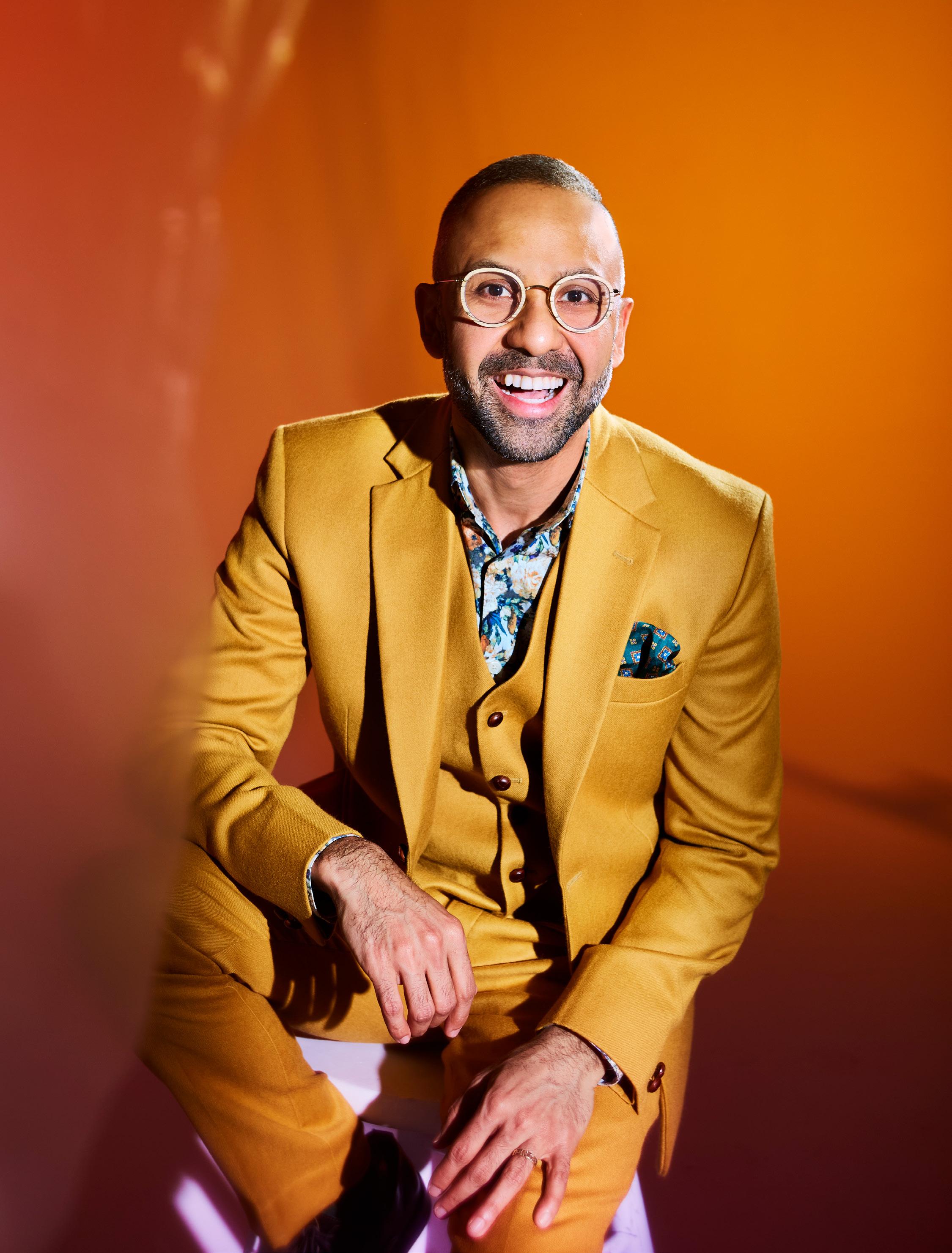

The team studied what experiences could yield needed skills to deliver desired short- and long-term business results. Then, they painstakingly created libraries of experiences and mapped skills on top of experiences, function by function. Almost twenty thousand employees successfully migrated to the new model. Qadeer also piloted a unique, experiential talent model at Alexion. “This has enabled our talent to learn, relearn, or unlearn skills rapidly to keep up with an ever-evolving marketplace,” he notes.
The third key shift happening in HR, according to Qadeer, is the shift from diversity to belonging. Qadeer serves as Alexion’s first chief diversity officer. However, he’s not content with simply adopting the best diversity, equality, and inclusion (DEI) practices. As an
HR futurist, he is focused on rethinking DEI. “Belonging is the goal,” he says. “We want people to feel included because of their uniqueness and not despite it.”
While at Bristol Myers Squibb, Qadeer expatriated to Rome and gained powerful insights around HR and diversity in a global context. Using such insights, Qadeer has created the “Ten Dials of Diversity” (p. 113). The dials include categories like age, race, gender, sexual orientation, socioeconomic status, and neurodiversity. By

implementing these dials, an organization can adjust its focus on a category based on organizational goals, culture, current events, or the needs of a specific team, office, or country.
Qadeer has implemented this framework at Alexion to build a marketleading DEI function. In less than six months, his team engaged 6 percent of Alexion’s global workforce in helping to drive DEI efforts. Qadeer credits his focus on Ten Dials of Diversity with securing widespread enthusiasm from

“Belonging is the goal. We want people to feel included because of their uniqueness and not despite it.”
http://www.deloitte.com/ us/humancapital

global employees. “Corporations need to reimagine how they define diversity to bring unusual groups of employees together and solve their shared problems through an expansion of diversity-focused coalitions,” he says.
“I am so proud of what we have built at Alexion,” Qadeer enthuses. “Our focus on human experience has created an environment where our employees feel a sense of belonging, learn new skills rapidly, and are obsessed with serving patients. This has propelled us from being previously unranked to being ranked seventh in the Pharmaceutical Innovation Index in just over eighteen months.”
Qadeer’s entire life has put him in unique contexts. He was born in
Pakistan and once attended a Catholic school, despite not being Catholic. He immigrated to the United States and experienced both the challenges and the opportunities of an immigrant story. Such dynamic experiences have trained Qadeer to imagine a world full of empathy and possibility—one in which people belong and feel liberated.
“It is my personal purpose to ‘set people free,’ because when people feel free, breakthroughs are inevitable,” he says. “Liberated people trust one another and take thoughtful risks. In business, trust leads to collaboration and risktaking leads to innovation. When people are free, a transformative future can be imagined and created.” AHL
“It is my personal purpose to ‘set people free,’ because when people feel free, breakthroughs are inevitable. . . . When people are free, a transformative future can be imagined and created.”
Every step executives take on their career journeys is pivotal to achieving their current successes. Along the way, individuals accumulate technical skills, foster relationships, and develop the leadership acumen that have turned them into pioneers of the industry.
46. Catherine Codispoti Children’s National Hospital 52. Laurie E. Weinstein Maimonides Medical CenterAs chief people officer at Children’s National Hospital, Catherine Codispoti supports employees by empowering them to go the extra mile
 By Frederick Jerant
By Frederick Jerant
Portraits by Jabari
JacobsC atherine Codispoti’s career track began in her childhood, as she accompanied her family to various children’s hospitals—but not for the typical check-up.

“My younger sisters Alexandra and Diana are identical twins and have achondroplastic dwarfism [a growth disorder that prevents cartilage from changing into bone]. Medical teams followed them rigorously—first to determine what type of dwarfism they had, and then to monitor their growth rates, mental and emotional development, and other markers,” Codispoti says.
She intently remembers the contrast of these hospitals compared to adult facilities. “They were very warm and inviting places, and I was never scared or worried. Everyone came down to my level and spoke to me directly. That personal touch was a big influence on me, and seeded my passion for being in healthcare,” she says, noting that from age six until her sophomore year in college, her goal was to become a pediatric surgeon.
Codispoti joined the pre-med program at Wofford College and landed an internship with a chemical firm. The experience included taking a behavioral brain dominance test, but the results surprised her. “They indicated my personality really wasn’t suitable for a pediatric surgeon,” she says. Instead, they suggested she had potential for success in higher-level senior leadership roles.
In her junior year, Codispoti had an epiphany. During a course on the evolution of healthcare policy, she realized that the administrative side—ensuring access, influencing policy, providing resources—was where her heart truly lived.
After graduation, Codispoti earned her master’s degree in health administration and policy from the University of Oklahoma Health Sciences Center, where she was mentored by Dr. Edward N. Brandt Jr., Ronald
One of Catherine Codispoti’s greatest sources of fulfillment is her ability to balance work, life, and marriage, and she’s an advocate for other women to do the same. Of course, she notes, no working mother can be 100 percent perfect in all three categories all the time. But she’s found that one thing that helps is making a clear divide between work time and family time.
“Be sure to set aside family time as much as you can,” she advises. “Our daily rule is no phones, no emails, no texts between 5:30 p.m. and 8:00 p.m. when we are with the kids. You really need to set up boundaries like that—and stick to them.”
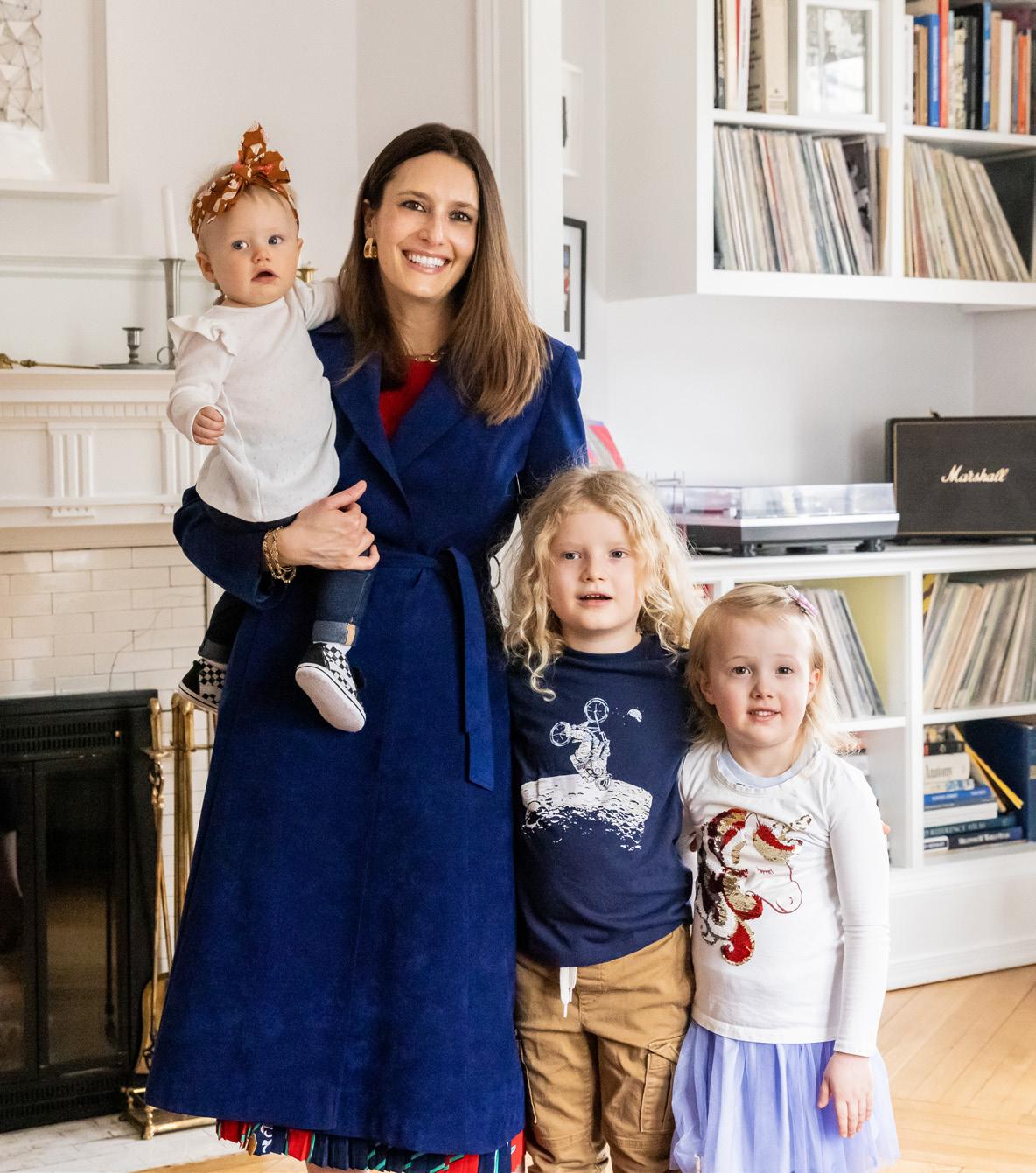
Reagan’s acting surgeon general and United States assistant secretary for health. “He began his career as a surgeon and moved to the administrative aside,” she recalls, “so I felt an instant connection to him.”
Out of university, Codispoti’s first job in hospital administration was at Texas Children’s Hospital. And while a typical executive career path resembles a straight line, Codispoti’s twelve-year tenure at Texas Children’s followed the curve of her desire for challenge and life-of-learning philosophy.
Originally an administrative fellow at the hospital, Codispoti soon took over managing and directing nursing business operations in the emergency department, followed by spots in clinical planning and financial management, corporate financial planning, operations and finance, and culminating as vice president of human resources in 2016.
“All of those promotions were rooted in my personality and my interest in constantly learning,” she recalls, “but a lot has to do with the organization itself. They saw my leadership skills as transferable, and placed me in positions where I could excel, even when facing a steep learning curve.”
“Moving into corporate finance and operations were turning points for me,” she adds. “It was my first exposure outside of the pediatric hospital—health plans, private practices, women’s services, faculty administration, outpatient services. It was just an awesome opportunity for me to gain more exposure.”
After three years as HR vice president at Texas Children’s, Codispoti was hired by Children’s National Hospital as vice president and associate chief people officer in 2019 and became chief people officer in 2021. She currently runs a team of about seventy, whose duties go far beyond talent acquisition.
“Over the past few years purely based on selecting our talent with this datadriven approach, our retention has increased by 1 percent and employee engagement is up 2 percent .”
“We’re also concerned with learning and development, succession planning, occupational health, regulations and compliance, collective bargaining, HRIS, compensation, benefits, wellness, employee call center, and we even have ‘mini-CHROs’ that support specific business partners within the hospital,” she explains.
Whatever the position, Children’s National Hospital has increasingly tended toward data-driven hiring practices, which has helped Codispoti maintain a culture of learning and growth. “A behavioral assessment is part of the interview process. Applicants are scored on particular competencies and behaviors. Those data influence our hiring decisions, and we are actively working to apply them throughout the employee lifecycle. Over the past few years purely based on selecting our talent with this data-driven approach, our retention has increased by 1 percent and employee engagement is up 2 percent,” Codispoti says.
Of course, as chief people officer, Codispoti’s main job is to keep Children’s National employees at the center of her plans—a goal that became more imperative and more difficult at the onset of the COVID-19 pandemic. Luckily the hospital took some creative steps to keep the people side of the business at the forefront.
“Our executives have regular virtual meetings with our employees, keeping everyone up-to-date on what is happening and why it’s happening,” Codispoti explains. Children’s National also offered expanded remote services, monitored its PPE levels, and even reallocated employees within the organization. “It’s helped us maintain a steady level of employment,” she says.
Beyond employment, the hospital made sure that its fairly young workforce had resources it needed to maintain work/life balance. With daycare centers shuttered,
Catherine Codispoti’s passion for learning coincides perfectly with Children’s National Hospital’s culture of improvement. She reads various trade publications, uses professional social media, and participates in local organizations. “Dr. Kurt Newman, our president and CEO has always advocated membership in business groups,” she says. “It’s a great way to learn about economics, finance, politics, and other topics, and to talk with executives about the various challenges they face—and how they solve them.”
“[The organization] saw my leadership skills as transferable, and placed me in positions where I could excel, even when facing a steep learning curve.”
the hospital took a novel step to help with childcare during work hours.
“Our talent acquisition team shifted gears, and began recruiting in-home childcare workers for our employees,” Codispoti says. “People in the community were welcome to apply, and we worked with the IT and legal departments to build a database. The hospital paid for their background checks and was able to link caregivers to families that needed them. It has really worked out well.”
“Catherine’s decisions and actions are grounded in unwavering principles. She can be counted on to do the right things for the right reasons. People follow her lead because they know she has their best interests—and those of the organization—at heart,” says Mitch Bergen, client strategist at Talent Plus Inc. and close partner of Codispoti’s team. “By way of her high ambiguity tolerance, Catherine is unphased by the challenge of unchartered territory. Her talents position her to lead through complexity and significant challenge. Confident and resourceful, she jumps in with both feet and figures it out.”
As a mother of three children (a six-, a four-, and a oneyear-old) this mission to balance work and life is close to Codispoti’s heart. She believes that working mothers can have it all: a rewarding job, a loving marriage, and a family. But, she says, no one should have to fly solo. “My family is very fortunate to afford a nanny,” she says, “but we also have a village-worth of relatives and friends that are available to help us when we need it.”

Putting together this community-based childcare program was just one big way to create that village for others. More so, it’s a way for other women to have the bandwidth to see the potential in their path. That mission is also the backbone of Chief, a private network made up of over four thousand of the most influential senior leaders in the United States. Codispoti is a founding member of the DC chapter. Chief is designed specifically for women at the VP through CEO level and works to permanently break the glass ceiling present among executive leadership in America.
Speaking of CEOs, that title is on Codispoti’s list of goals as well. “I’ve had many different experiences throughout my career,” she says. “That position would enable me to draw upon all of them to help set a vision and strategy, and then to see their impact on the employees, patients, and families.”
But Codispoti’s vision as a CEO would extend beyond the physical building. She finds personal and professional inspiration from empathetic trailblazers like Sheryl Sandberg, Brené Brown, and Glennon Doyle. And by partnering with local resources and using her own experiences to shape her approach, Codispoti would lead using a personal touch, a tool that can inspire and empower anyone. She would know. AHL
Talent Plus is proud to support Catherine Codispoti and Children’s National Hospital as they take an innovative and people-first approach to employee and patient health.
We support Children’s National’s mission to excel in care, advocacy, research, and education. They accomplish this through providing quality healthcare experiences, improving health outcomes, and leading the creation of innovative solutions. We commend Catherine as a positive force for change in the healthcare industry.
Laurie E.
Center has built a decades-long career in health law by embracing challenges and facing the unknown
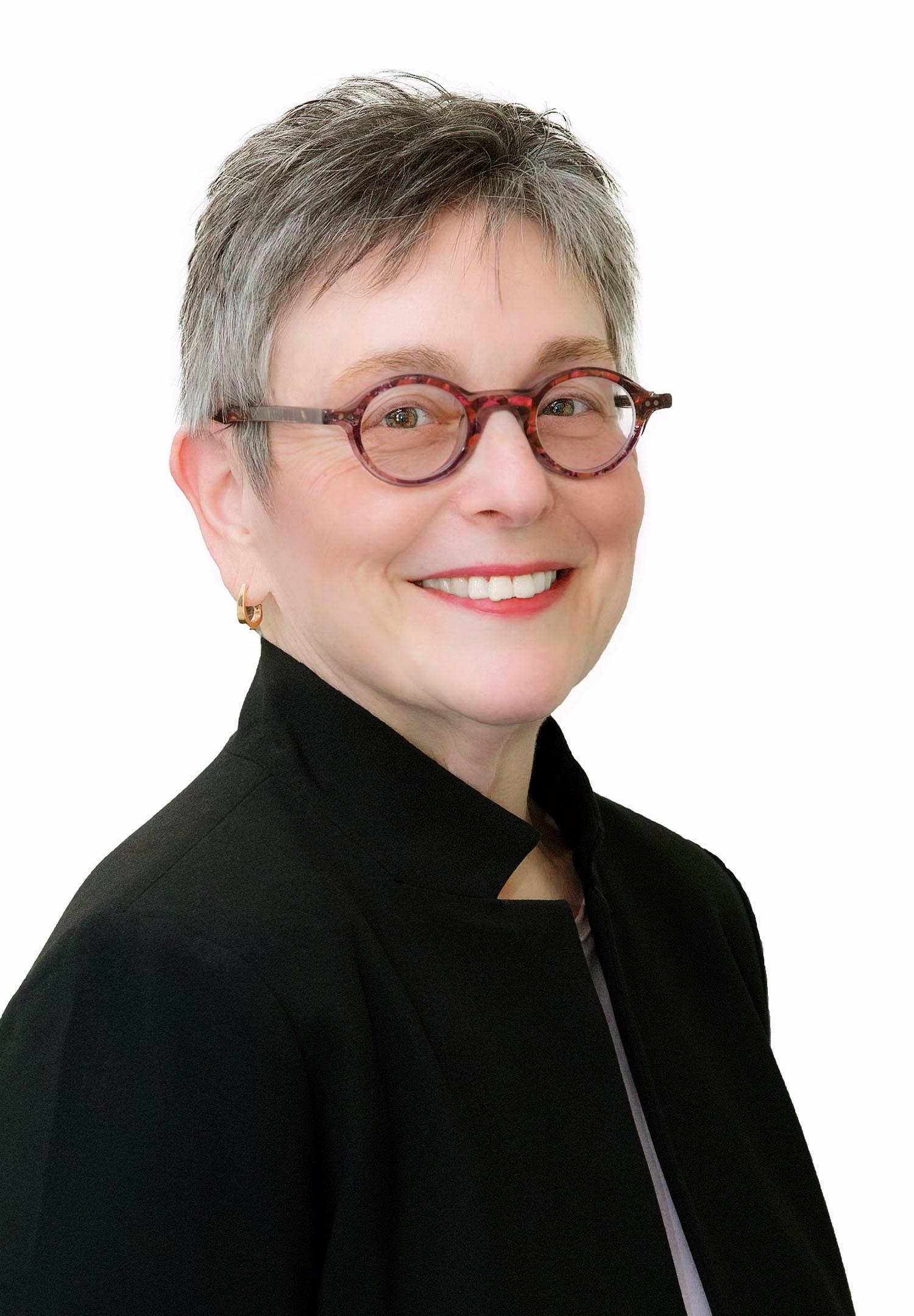 Laurie E. Weinstein EVP and General Counsel Maimonides Medical Center
Laurie E. Weinstein EVP and General Counsel Maimonides Medical Center
It’s not by chance that Laurie E. Weinstein has worked in healthcare systems of all models. “I’ve always been interested in the challenges of new things,” Weinstein notes. “I thrive on change and on a fast pace.”
Weinstein is currently seeking out new challenges as executive vice president and general counsel at Maimonides Medical Center, Brooklyn’s largest hospital. Initially attracted to the hospital by a unique leadership perspective—the CEO has a background in business and finance rather than medicine or government—she now applies her extensive legal and healthcare expertise to provide trusted counsel to executives and aspiring attorneys alike.
Weinstein began building her knowledge as a private practitioner after graduating from Suffolk University Law School. She spent three years handling matters in probate and family court while also starting to explore health law. Her efforts allowed her to step into the role of assistant general counsel at the Massachusetts Department of Mental Health in 1989.
During her time at the Department of Mental Health, Weinstein was sole counsel to a state psychiatric
hospital as well as providing counsel to a medium-security treatment center where she focused on legal issues pertaining to sexually dangerous persons. She then moved to the University of Massachusetts, accepting a role as associate counsel for the university’s five campuses.
“I was hired to bring my experience from the Department of Mental Health with respect to informed consent and related patient care matters to the University’s medical school and medical center,” Weinstein explains.
Beyond patient care work, Weinstein was introduced to corporate healthcare as she was asked to take on the challenge of collapsing a city authority and merging components of it with the university. At the same time, she developed and implemented a parallel corporate structure that provided the foundation for the medical center’s privatization and merger with Memorial Health Care.
Following the merger, Weinstein became UMass Memorial Health Care’s associate general counsel. “I was responsible for creating and maintaining the system of corporate entities that we developed de novo and through mergers and acquisitions of physician practices,
“Working for a private-equity-owned healthcare system gave me a very different perspective. Having seen so many different models for the delivery of healthcare enables me to think more broadly about ways to approach challenges.”
hospitals, clinics, surgery centers, and the like,” she says of the role.
Seven years later, Weinstein moved to Harvard Medical School’s teaching hospital, Beth Israel Deaconess Medical Center (BIDMC), as deputy general counsel. While at BIDMC, she executed a number of acquisitions, joint ventures, and strategic affiliations, including one with Massachusetts’s largest multispecialty physician group.
In addition, Weinstein transitioned the corporate structure of BIDMC’s faculty practice plan to a quasi-independent model. She also established BIDMC’s first hospital within a hospital, the CardioVascular Institute.
Her role in creating the CardioVascular Institute at BIDMC brought Weinstein to the attention of the new CEO of Caritas Christi Health Care (CCHC), a six-hospital Catholic system in Boston. Weinstein came on board as CCHC’s vice president and deputy general counsel and facilitated the system’s sale to a private equity firm.
Through the sale, CCHC became Steward Health Care. Weinstein went on to play a critical part in building out Steward through numerous hospital and physician practice acquisitions.
“I’ve always been interested in the challenges of new things. I thrive on change and on a fast pace.”
“Working for a private-equity-owned healthcare system gave me a very different perspective,” says Weinstein. “Having seen so many different models for the delivery of healthcare enables me to think more broadly about ways to approach challenges.”
The Permanente Medical Group Inc. (TPMG), the largest medical group in the United States, recruited Weinstein as managing counsel in 2014. She oversaw TPMG’s legal department for the next six years, spending over one year as acting general counsel. During that period, the scope of her legal services extended to TPMG’s Mid-Atlantic group as well.
The depth of Weinstein’s experience made her the perfect fit for Maimonides, which she joined in October 2020. “I saw that the organization had amazing potential, but it also faced enormous challenges. I wanted to help overcome some of those challenges and to make a difference for Brooklyn’s incredibly diverse community,” she says.
In her current role, Weinstein oversees a team of four attorneys and collaborates closely with Maimonides’ leadership to guide the hospital through its transformation work amid the COVID-19 pandemic. Even amid ongoing difficulties,
she continues to provide excellent client service by offering counsel drawn from the cumulative expertise that she has acquired over the years.
Weinstein leans on that same knowledge base during informational interviews and other interactions with up-and-coming attorneys. One point that she emphasizes to those attorneys when talking about how to navigate an in-house career is the importance of fostering client relationships.
“Oftentimes, clients are looking to you for much more than legal advice,” Weinstein elaborates. “My most gratifying transformation over the years has been becoming a valued thought partner of executive leadership.”
That transformation marks yet another experience for Weinstein to add to her repertoire. It reminds her that she is still growing as an attorney—something for which she is grateful. As for the source of her continuing growth, she believes that it stems from her willingness to say “yes” to new opportunities and to venture into unfamiliar territory without hesitation.
“I’m a big believer in not being afraid of what you don’t know,” says Weinstein. “There is still so much to learn.” AHL





Allison Oncel’s nontraditional path to global benefits gives her special insight into L3Harris’ business goals and its people’s needs
“I would say I’ve had somewhat of a nontraditional career,” says Allison Oncel, senior director of global benefits at L3Harris Technologies. Oncel trained to be a social worker but decided to pivot early on in her career, which sent her down a path of constant learning and growth—all while putting her people skills to good use.
Oncel majored in psychology at the University of Delaware and went on to earn her master’s degree in social work at the University of Maryland Baltimore. She trained to be an employee assistance program counselor and found her first job at a managed behavioral healthcare company called Value Options. She offered on-the-spot,
over-the-phone counseling to employees of large corporations and also provided consultation services to human resources managers dealing with challenging employee situations.
Four years into her career, after earning her first-level license, Oncel made the jump to change her path. “I came to a point after four years when I realized that I didn’t want to do this for the rest of my life,” Oncel explains. “All my education and training and experience up until then was focused on the narrow space of clinical social work. So I thought, ‘Now what?’”
Oncel turned her “Now what?” into an opportunity to branch out of her department and into a marketing and proposals role within the same company. Though she didn’t have any formal training in that area, her first-person experience made her an asset to the team. “They took a chance on me because they thought it was valuable that I understood the inner workings of the services our company delivered, since I was actually performing the work firsthand,” Oncel explains.
Eventually, Oncel was recruited by APS Healthcare to head its marketing and proposal department. There, she directed all corporate marketing and proposal activities and provided leadership of more than 100 proposal projects per year.
When APS Healthcare moved its headquarters to New York, Oncel decided she wanted to go in a different direction and began looking at new options. She went through many rounds of interviews at aerospace and defense company Lockheed Martin, only to be turned down.
Her interviewer made a point of calling her to let her know what a difficult choice it was for him but that he would keep her mind for the future.
At the time, Oncel figured his response was just a common courtesy—until a few years later, when that same person called her out of the blue. He had moved to aerospace, defense, information, and services company Exelis, where he had been tasked with building out the company’s global benefits department. “He told me he had always regretted not hiring me and offered me the opportunity to help him lead the new department,” Oncel explains.
Oncel took the job but once again found herself in a position with a serious learning curve. “The job description was literally nothing I’d ever done before,” she says. “It was an HR role in benefits, which didn’t relate directly to my prior experience.” With the mentoring of her employer, she picked up the business quickly and was soon handling the benefits for more than ten thousand employees and nearly just as many retirees at Exelis.
Exelis was acquired by Harris Corporation in 2015, which meant handling the harmonization of the organization’s benefits program. As it turned out, that was only a warm-up. In 2019, Harris Corporation merged with L3 Technologies. For Oncel, that meant harmonizing benefits on a global scale for nearly fifty thousand employees in just six months, followed by taking on an expanded role within the newly combined company overseeing the global benefits function.
“When we do harmonization, sometimes things move one way or the other, but it can also be an opportunity to do something completely different .”
American Benefits Consulting is a highly specialized national benefits consulting firm that has worked with some of the largest companies in the world for nearly 45 years. We focus on developing and executing best-in-class solutions for our clients’ benefits needs across a variety of disciplines.
ABC has deep experience working with some of the largest companies in the world helping them design, implement and optimize benefits programs for maximum benefit to the company as a whole, and to their employees. ABC’s practice lines consist of Group Insurance, Voluntary Benefits, Executive Benefits, International Benefits and Captive Reinsurance.
American Benefits Consulting
An Alliant Insurance Services Company, Inc. 101 Park Avenue, 14th Floor New York, NY 10178 212-716-3400
www.abcsys.com | info@abcsys.com
“I feel like I have some really good experience under my belt,” Oncel reflects, now having gone through two largescale mergers and acquisitions. “It’s an exciting process, and it’s also a great opportunity to take a fresh look. When we do harmonization, sometimes things move one way or the other, but it can also be an opportunity to do something completely different.”
Oncel’s varied professional experience continues to prove invaluable to her role at L3Harris. Having worked for so long on the vendor side of healthcare that she knows the ins and outs of the business and the complexities behind all the products and services. “I feel like I kind of switched teams,” jokes Oncel. “I have to say I much prefer being on this side. It has many more elements to it, and you also get to call the shots, so to speak.”
Even Oncel’s training as a social worker continues to inform the sensitivity that she brings to her work in global benefits. She never fails to appreciate the personal nature of benefits—particularly healthcare. Though she doesn’t have daily interactions with most employees, she
knows how important it is that employees feel that they and their families are taken care of.

“Benefits can be a very passionate topic. People have different needs and depend on the benefits we provide to meet those needs,” Oncel explains.
While social work gave Oncel a knack for working with people, benefits gave her a knack for working for people to meet certain needs. Much like her recent initiatives to bring together separate companies on a large scale, Oncel’s two worlds harmonize perfectly. The people component, she says, is the greatest “common thread.” AHL
When two large companies merge, there are challenges and opportunities. American Benefits Consulting, an Alliant Insurance Services Company was pleased and privileged to work with L3Harris, supporting Allison and her colleagues throughout the process. Our main objectives were to ensure the existing benefit programs were well-documented and the new designs are comprehensive and cost-effective.
“Benefits can be a very passionate topic. People have different needs and depend on the benefits we provide to meet those needs.”
National, and even global, forces have an unmistakable impact on an executive’s work. Whether it’s a legislative change or an industry-disrupting technological breakthrough, executives must constantly adapt their business strategies to keep their company thriving.
64. Veronica Lei Eli Lilly and Company 68. Pearl Siew Eagle PharmaceuticalsVeronica Lei sheds light on how the COVID-19 pandemic tested the limits of already busy working parents and why work/life balance is more important now than ever
By Natalie KochanovV
eronica Lei dreamed of becoming an assistant US attorney for years before landing a job at the US Attorney’s Office (USAO) for the District of Massachusetts. Despite long working hours and a brutal commute, she dedicated herself to the role—until her full-time nanny broke an ankle.
Suddenly without childcare, Lei and her husband reassessed their living situation. “Life changes,” Lei says. “We had two little kids and no family in Boston.”
The couple relocated to Indiana, where Lei joined major pharmaceutical company Eli Lilly as a litigation
and legal compliance counsel. Since then, she has risen to become assistant general counsel and now leads a global team that handles privileged internal investigations. However, her struggle to balance work and motherhood has only increased with her in-house success. A year into the COVID-19 pandemic, that struggle remains at the forefront of her mind as she seeks to manage the often-competing concerns of working, parenting, and living through these times.
Before COVID and before children, Lei got her start as a Department of Justice program analyst after obtaining
 Veronica Lei Assistant General Counsel for Litigation and Global Lead of Privileged Investigations Eli Lilly and Company
Veronica Lei Assistant General Counsel for Litigation and Global Lead of Privileged Investigations Eli Lilly and Company
“I worked every single minute that my kids were asleep. I was with them whenever they were awake, but the second that they went down for a nap, I was working .”
her bachelor’s degree from Columbia University. The role sparked her interest in law in general and federal prosecution in particular.
Five years out of Harvard Law School, Lei secured her then dream job. She spent over six years at the USAO, where she specialized in asset forfeiture. But not even the intensity of her working environment could have prepared her for the needs of a young family. “I worked every single minute that my kids were asleep,” she elaborates. “I was with them whenever they were awake, but the second that they went down for a nap, I was working.”
Still, Lei found her job at the USAO incredibly fulfilling. Just before 2015, Lei’s husband suggested moving back to his home state, Indiana, to be close to his mom. But Lei was hesitant—she agreed only to move if she found a job just as stimulating as her USAO work. A timely opening at Lilly fit the bill, and her discovery of a Mandarin immersion school for her boys was icing on the cake. They took the leap.
Beyond aligning with her expertise, the role at Lilly brought her to a company known for its support of working parents. Lei is quick to note that Lilly’s support doesn’t equate to shorter hours. “That is not what a company supportive of working parents does. Rather, the company gives parents the tools to take care of their kids so that they can work,” she explains. At Lilly, those tools include backup daycare days and flexible working hours that allow parents to adjust their schedules around expected, and unexpected, family obligations.
When COVID hit, like most of her colleagues, Lei began working remotely from home. At first, she appreciated the time saved by no longer commuting or running back and forth to pick up her kids. Yet, as the pandemic dragged on, she noticed a shift. Formerly normal activities that required her to step away from her computer now receive warped reactions. There was an expectation for her to be constantly available, courtesy of COVID’s “new normal.”
“A lot of my colleagues and I want to go back to the office because we miss having boundaries between our work lives and our home lives,” Lei says. The two sides have bled together, leaving her caught in the middle.
In many ways, Lei has been lucky during the pandemic. She and her husband have remained employed, with the means to hire a sitter to help watch the kids. Even so, everyday logistics and household distractions occupy Lei’s mind both on and off the clock.
“The pandemic has gone on for so long that I don’t know if anyone cares anymore,” she admits, referring to the plight of working parents. “Hopefully, supervisors and employers will continue to recognize the strain on the workforce of having to do both.”
Recognizing the strain and minimizing it, though, are two different issues. Lei is torn between wanting to spend more time with her family and wanting to advance her career, especially as an Asian woman who could shepherd in greater leadership diversity. “If I climb higher, maybe it will become more normal to see someone who looks like me in a leadership position,” she says. “But I will never recapture that time with my kids.”
Lei sometimes feels guilty for divvying up the hours in her day. Still, she finds inspiration and optimism where she can. COVID shone a light on the difficulties faced by working parents, albeit by exacerbating those difficulties. Lei hopes that a greater level of understanding and flexibility will accompany the return of some much-needed workplace structure, as people remember what they learned about their colleagues while working from home.
Until work becomes less ubiquitous post-COVID, Lei will continue to carve out time for her family. She wants to be present in those moments with her kids, now seven and nine years old. “I still remember the bleary-eyed few weeks after having my firstborn,” she says. “I’ve never done anything harder in my entire life than taking care of that little person.”
As impossible as her current balancing act sounds, Lei has already overcome much more. AHL


As the SVP and head of intellectual property at Eagle Pharmaceuticals, Pearl Siew is always ready for what the industry may throw her way
Considering law is a profession rooted in precedent, it may seem as if it would take a lot to surprise an attorney. Such is not the case in pharmaceutical law, however. Pearl Siew, senior vice president and head of intellectual property at Eagle Pharmaceuticals, can attest to the surprises that she has encountered throughout her career as a lawyer in the pharmaceutical space, both throughout her career path and through the everyday fluctuations of her role.
Siew has a background in chemistry, but she originally worked as a patent attorney for Frommer Lawrence & Haug. It was in this first role that she was introduced to the pharmaceutical industry, and the majority of her work involved litigation surrounding both branded and generic pharmaceutical products. Yet, as much as she learned about the pharmaceutical industry in this role, there was still so much ahead of her.
After working for a private firm for about seven years, she then transitioned to an in-house role at Sandoz, a division of Novartis, and quickly realized that
despite all that she knew about pharmaceutical litigation, she was truly surprised by the enormity of decisions faced by in-house lawyers at a pharmaceutical company. At Sandoz, she learned to embrace and even lean into the unknown.
Siew worked with Sandoz for nearly five years before transitioning to Eagle Pharmaceuticals. The change taught Siew how to scale down her work strategy. Compared to Sandoz’s 25,000 employees and Novartis’ 200,000, Eagle Pharmaceuticals only has about 150 employees. In this new role, with a smaller team of attorneys by her side, one of Siew’s biggest transitions was handling litigation that she had not had to work on when she was at a bigger company. As a senior attorney at Sandoz, there were often more junior attorneys available to handle certain types of litigation, but the caseload at Eagle Pharmaceuticals fell almost entirely on her. This was not a deterrence, however, but a welcome challenge.
Eagle Pharmaceuticals specializes in producing new age injectable treatments and sharps for oncology patients, those in critical care, and those with orphan diseases, known more broadly as rare diseases or as conditions that affect less than 200,000 people in the US. These conditions are basically unpreventable and usually result in a far lower life expectancy. As such, most pharmaceutical companies avoid making and marketing new medications in this specialty because it provides little financial incentive for the effort it takes to do so.
But Eagle is different. The organization works to accomplish its goals primarily by developing and commercializing
injectable treatments, and given the company’s unique position within the industry, the intellectual property at stake is incredibly valuable. Siew manages that IP at Eagle from inception to production, helping patients living with these conditions have a chance at a longer life.
ChIPs stands for “chiefs of intellectual property.”
Founded in 2005 by seven women, ChIPs is a nonprofit group that seeks to represent women in STEM fields, particularly those working in IP. Now with more than 3,700 members, women within the organization seek to use their own successes and networks to give back to others just starting out in the field, make positive change in the industry, and close the gender gap for STEM positions going forward.
In all of these different roles within the pharmaceutical industry, Siew felt that one of her biggest challenges throughout her time has been the need to bounce back and forth between issues that are constantly being given to her, that are all, in a sense, unrelated to each other. She has to be able to think and change mindsets quickly and effectively.

In addition to her work with Eagle Pharmaceuticals, Siew also serves on the advisory board for the American Conference Institute’s annual Paragraph IV Disputes conference, or the HatchWaxman Series Advisory board. The
conference is held in an effort to highlight in-house advisers, including chief IP and senior IP/patent counsel from the leading brand name and generic pharmaceutical companies in the country. She is also involved with ChIPs, a nonprofit organization that helps to advance and connect women working in technology, law, and policy.
Despite the surprises she may encounter in her role in the pharmaceutical industry, Siew is always able to charge ahead, give back, and to continue to push herself to grow both personally and professionally. AHL
Anthony Spero doesn’t hang mission statements or create taglines to retain talent. He hires passionate people.
By Billy YostThe first thing any new hire can expect is to be inundated with what it means to be a part of their new organization. Culture, mission statements, and value propositions aren’t just included in an onboarding packet, they’re often hung in every corner of an organization to remind employees where their priorities should lie. The idea of “company culture” is one tortured over by executives and HR departments, striving for the exact wording to accurately relay just
what it means to be under the umbrella, no matter how large or small, of a larger community.
Anthony Spero has a different approach.
Spero leads an organization that operates in more than 25 states (as well as Puerto Rico), has 2,500 employees, and provides hospice, home health, palliative care, long-term care pharmacy, private duty servicing, and hospice pharmacy services. He serves as chief operating officer and president at Care
Solutions—the parent company for Partners Pharmacy, Advanced Pharmacy Solutions, Ascend Hospice & Home Health, and Avantum Hospice Pharmacy.
Spero started his healthcare career in a family-owned nursing home in Massachusetts. He worked in food service and the kitchen until he earned his CNA (certified nursing assistant) license, then worked the 11 a.m. to 7 p.m. shift doing direct patient care. He speaks about every experience since those days with the same zeal, passion, and humility that have become hallmarks of his own executive leadership. His views on creating culture are just as emphatic.
“My idea of creating culture is making sure that people feel valued and appreciated every day, and that we’re giving our folks an opportunity to grow within the company,” Spero says. “My idea of culture is hiring the right people and putting them where they can be 100 percent themselves.”
The COO says dogmatic adherence to some larger company mantra is pointless if the people he hires aren’t able to bring their full skill sets, personalities, and leadership qualities to their roles.
“I said this to a leader that I hired last week who I just think is incredible,” Spero says. “I just told them that I wanted them to bring all of themselves to the organization. I wanted them to
“My idea of creating culture is making sure that people feel valued and appreciated every day, and that we’re giving our folks an opportunity to grow within the company.”
be 100 percent who they are, and they looked shocked. They said no one had ever said that to them before. It’s not about creating a culture that everyone has to subscribe to. I want our people to know that if they bring all of themselves, they’re always going to be respected and honored.”
The success and multitude of Spero’s healthcare endeavors are matched by high retention rates in all of the businesses he heads. Spero doesn’t employ any agency staff, even in the middle of a pandemic. The COO has a close connection with his staff. “I like to share how much I care about our people and recognize the incredible job they do each and every day,” Spero says. “That recognition
Anthony Spero COO and President Care Solutions (Partners Pharmacy, Advanced Pharmacy Solutions, Ascend Hospice & Home Health, and Avantum Hospice Pharmacy)
is also balanced with a strong sense of accountability-centered, results-driven culture focused on meeting and exceeding our commitments.”
Commitments is the key word. Spero says he’s driven executives crazy with the language he wants used in meetings. “Whenever I hear the word ‘hope’ or ‘maybe’ I correct it,” Spero explains. “We’re coming from a place of empowerment. We are intentional about our commitments and holding ourselves accountable to that. My commitment to our team is that I will always provide them with the support and resources to be successful and then make sure that I get out of their way.”
Those commitments include changing the face of long-term care pharmacies. One of the offshoots, Advanced Pharmacy Solutions (APS), has developed an ecosystem of automatic medication packaging and dispensing devices and services designed to help save time, improve care, and reduce costs. “Why should any nursing center where a patient is being cared for have to wait for a medication to be delivered to a facility when they can have APS?” he poses.
The APS system connects directly to electronic medical records to dispense medication for patients right when they need it and in real time. That means no excess medication (an average of eight days of medication per patient per month is saved by APS), less time for nurses to spend away from their patients, and
“This is the future of post-acute care. This bypasses all of the companies whose whole business model is based on waste, and it gets nurses back with their patients, where they’re most needed.”
no medication counts when caregivers change shifts because the APS system is the pharmacy.

When Hurricane Maria flooded nursing homes, the APS PassPort machines provided medications on-site at the nursing center when other pharmacies struggled to be able to deliver medications to facilities they could not access and or travel to. “This is the future of post-acute care,” Spero says. “This bypasses all of the companies whose whole business model is based on waste, and it gets nurses back with their patients, where they’re most needed.”
While technology is driving innovation at APS, Spero says the IDEA [Inclusion, Diversity, Equality, Awareness] committee is driving the heart and soul of the organization. “That’s the meeting I look forward to most each week,” Spero says. “We have amazing diversity here, and I’m so excited to be able to tap into that incredible knowledge and leadership that this group offers and to think about what we can do differently as an organization.”
The IDEA and idea, Spero says, all comes back to empowerment. Sensitivity training, creating new opportunities for rising leaders, and highlighting what makes Spero’s people “100 percent themselves” are all points of focus. The

IDEA committee members will be the keynote speakers for the organization’s 2021 leadership meetings, and Spero is dedicated to making sure the group has a respected, honored, and valuable voice. Spero’s focus on finding passionate and motivated people is paying off. A new pharmacy adherence and medication management company was just launched with a focus of continuing to shift long-term care pharmacy services to a value-based, care transitions model with a medication management platform. But the businesses all seem to come back to the same motivating force for Spero. “Every day I and our leaders get up thinking about how we can show appreciation for these amazing people,” the COO says. “That’s what motivates me and our team every day. I feel blessed to be able to impact so many lives.” AHL
At MHA , we are proud to support Anthony Spero, chief operating officer at Partners Pharmacy, and his continuous commitment to find for ways to improve patient care. Like Anthony, MHA is committed to providing innovative products, solutions, and services that help pharmacies successfully meet their patients’ needs.
Healthcare is a constantly evolving industry that requires executives to plan ahead. Often, this means business leaders need to address department- or companywide issues to remain focused on driving innovation and devising strategies to maintain a high level of care.
78. Natasha Cogdill Community Medical Centers 84. Ellen Hudock GlaxoSmithKlineAs a former RN and nurse practitioner, Natasha Cogdill brings her unique perspective to bolster compliance at Community Medical Centers
By Billy Yost Natasha Cogdill
VP of Compliance
Community Medical Centers
Natasha Cogdill
VP of Compliance
Community Medical Centers
atasha Cogdill, vice president of compliance at Community Medical Centers (CMC), has a saying about her position. “I tell people that you can invite compliance to the table in the beginning, or we may have to invite ourselves in at the end,” Cogdill says, laughing. Her advice isn’t that of a lifelong compliance expert; it comes from an RN, a nurse practitioner, an initially reluctant manager, and now a compliance executive who has seen virtually all sides of the caregiving experience.
Cogdill knows the talk may be tough, but it’s precisely because she’s worked adamantly to make the compliance office at CMC one of partnership and advocacy. She has seen the good work that can be undone by not including all vital parties in the conversation, and she is committed to making sure the compliance team is there early and often to ensure the organization’s patients receive the best care and that claims for services provided are accurate.
“I think that many times, the people that resist leading the most tend to do the best,” the VP says. If based only on that maxim, Cogdill was born to lead. The nurse and nurse practitioner was used to being in the middle of
high-stakes situations. She built out experience in the inpatient and outpatient settings, including cardiovascular, oncology, and surgical settings, all the while continuing her education. The transition to management that would eventually lead her to compliance was unexpected, to say the least.
“In my head, I was going to be a nurse and then a chief nursing officer, just like that,” Cogdill remembers, snapping her fingers. “I had said many times that I would never, ever work in middle management and certainly never thought I would work in compliance!”
But after being talked into what she thought was a temporary management position, Cogdill fell in love. She was managing five departments at once and was enamored with the impact she was able to have in such a short period of time. “I loved process improvement,” the VP explains.
“I liked taking on a challenge and learned to never underestimate an unexpected opportunity. You can do so much good work and learn so much from it.”
She found herself being shepherded to new departments, making valuable changes, and moving to the next one.
there and work together to accomplish our organization’s mission and vision.”
“I want people to understand that we [the compliance team] know you want to do the right thing. We also want to do the right thing. So let’s start
“I missed taking care of patients, but I found that the better you take care of your staff, the better care your patients are going to receive,” Cogdill says. “We had a fantastic employee retention rate and built collaborative relationships with other departments. I knew that nursing management would be my future, so I began looking for directorship within the organization.”
The chief audit, enterprise risk management, privacy, information security, and ethics and compliance officer for CMC had taken note of a large coding and billing reorganization Cogdill had undertaken within one of her department and offered her a position within the compliance office. Had the call come minutes later, Cogdill would have accepted a separate offer that came in moments after she hung up. “Whether you believe in fate or divine intervention, that call came at the exact moment it needed to. It helped me discover what I believe I will dedicate the remainder of my professional career to.”
Cogdill spent the night before starting her new role pouring over the Inspector General’s Office compliance program guidance documents. “I was a little terrified—OK, significantly terrified. What was I thinking, taking this position?” she reflects. “But since day one, I’ve never looked back.”
Cogdill has spent extensive time working to be an effective interpreter between the clinical and financial sides of the organization. “I’m grateful to be able to speak for and understand both sides of healthcare,” she says. “You can’t expect
the financial side to go back to school and become nurses in order for them to understand the clinical considerations, so that means us clinical folks have to learn their world and start speaking their language.” So Cogdill did that, and learned coding, billing, and documentation rules, regulations, and guidelines.
The financial side, especially in terms of governmental payer rules and regulations, Cogdill says, can be immediately overwhelming to the clinical side, whose primary focus is on patient care. Regulations need to be explained in terms that are relevant to the care clinicians provide at the bedside, not solely focused on the bottom line. When
“I’m grateful to be able to speak for and understand both sides of healthcare.
. . . Us clinical folks have to learn [the financial side’s] world and start speaking their language.”
the entire team is able to be on the same page, defenses go down, barriers disappear, and all parties can be heard. That’s when great things happen.
That ambassadorship applies to more than just Cogdill—it goes for the whole office. “I think a lot of misconceptions attributed to any compliance department may come from a lack of transparency or fear of retribution,” the VP explains. “I want people to understand that we [the compliance team] know you want to do the right thing. We also want to do the right thing. So let’s start there and work together to accomplish our organization’s mission and vision.”
Especially in healthcare, the idea of “ask for forgiveness, not permission” just doesn’t fly. And while compliance may tell you things you don’t want (or like) to hear, Cogdill can guarantee two things. Her office knows that, no matter what, timely feedback is to be expected whenever a question is asked or a concern is voiced. Second, allowing compliance to the table earlier will ensure fewer issues later on.
Cogdill says the compliance team has already been more effective in assisting departments who need more staff for essential work, and that the office will help others go to bat for resources they need if the case makes sense. Cogdill’s résumé is proof enough. As someone used to taking the wheel of any situation, her focus and commitment to always doing the right thing for patients, the organization, and the community starts with saving compliance a seat at the table. AHL
PROPEL is a year-round training and education program for all of your revenue cycle sta to help your organization consistently meet its financial and compliance goals.





PROPEL meets the specific needs of your organization:









> The need for training
> The need for compliance
> The need for consistency
> The need to maintain an e cient revenue cycle




See how we can help be a complete partner at https://interactive.hcpro.com/propel-training



As head of global legal operations for GlaxoSmithKline, Ellen Hudock uses technology and empathy to drive change and help teams work smarter, faster, and better
By Javanna Plummer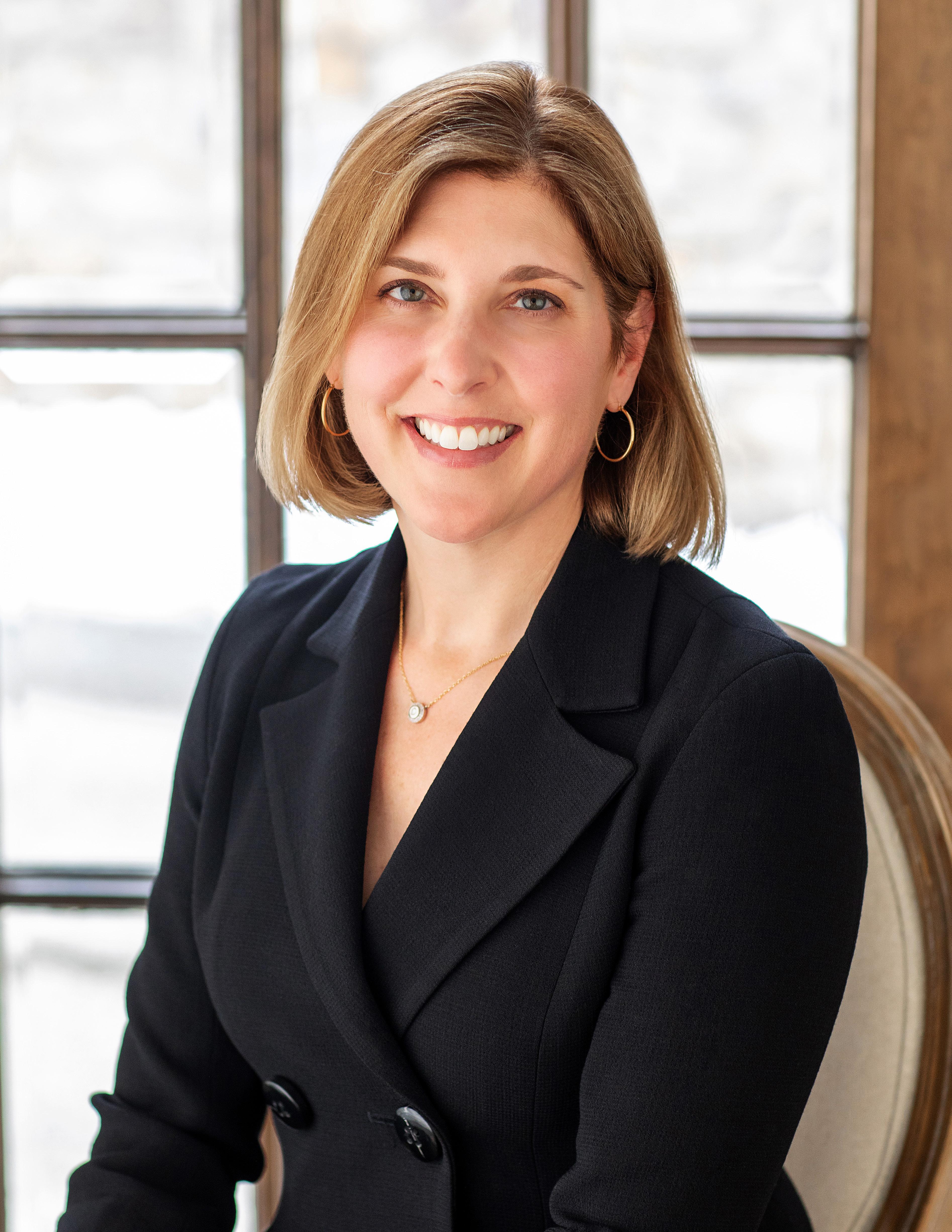 Ellen Hudock
VP and Head of Global Legal Operations GlaxoSmithKline
Ellen Hudock
VP and Head of Global Legal Operations GlaxoSmithKline
In 2018, Ellen Hudock assumed a demanding new role: heading the operations department within the legal function of a global healthcare company, GlaxoSmithKline (GSK). The multinational pharmaceutical company announced in early 2018 that it was planning to split into two new companies—a leading and growing global biopharma company, and a new world-leading consumer healthcare company. That meant that the legal function, too, needed to adapt and change.
Then the world was thrown into turmoil by the coronavirus pandemic. More than ever, Hudock’s optimistic approach to navigating work and change was critical as she asked herself, “How can we take the good, leave the bad, and come up with this new way of working for legal?”
Founded in December 2000, GSK has emerged as a leader in the healthcare industry, driven by its three strategic
pillars—innovation, performance, and trust—as well as its goal to “improve the health of millions of people around the world.” Throughout 2020 the company reported nine major approvals and nine new Phase 3 study starts, as well as more than twenty business development deals. Now, it has a biopharma pipeline to drive competitive growth, with over twenty new products slated for launch between 2021 and 2026—more than half with blockbuster potential.
For Hudock, one of the most fulfilling parts of her role is being part of a company that is focused on helping people do more, feel better, and live longer while helping to develop solutions to treat COVID-19. GSK is collaborating with several organizations that are working on promising vaccines and it’s also exploring potential therapeutic or alternative treatment options for COVID-19 patients.
Hudock heads global legal operations at GSK, and she sees the never-ending potential for change on the horizon for GSK’s legal department and takes any step to reach it. She is supporting the transformation of the legal department to prepare for the separation of GSK into two new companies—expected to happen in the second half of 2022. Specifically, she’s leading the team that is building out a technological road map for its future.
In 2018, GSK’s General Counsel James Ford was appointed, and the creation of Hudock’s team was something that he prioritized. Previously, key operations responsibilities were scattered across the department, but with Ford’s vision, legal operations would be merged centrally and made more strategic. “This was pivotal for the legal function and really helped to ensure that global legal operations could enable its purpose for the business while also putting me and my team at the forefront of helping the department work smarter and better,” Hudock says.
GSK’s legal department continues to evolve as it prepares to split into two new companies. In making this pivot successful, “a digital strategy is essential,” Hudock says, alluding to GSK’s general emphasis on technology.
To support the legal department’s own technological shift, a technology road map was created to support simpler processes and systems, better utilize technology, and plan for what GSK would need in the upcoming years to achieve that. “How can we maximize efficiency and drive business value? For legal specifically, this meant first looking at basic technology needs and moving towards enhanced automation and artificial intelligence, as well as the integration of platforms,” Hudock explains. “With new technology comes the enhanced ability to mitigate risk, host a secured platform for people to work on, and have a deeper knowledge of analytics.”
The idea for the road map was developed in 2019 as GSK’s legal team investigated ways to automate and simplify their systems and processes. Their initial focus was to deliver a modern and secure document management system to store and share privileged documents, have meaningful search capability, and integrate with Microsoft Office apps.
Looking forward to 2021, the team is focused on enhancing its IP life cycle management and contract life cycle tools, which would enable improved workflow capabilities for contracting and IP management. The ultimate goal is to integrate legal’s technology and data into a centralized portal.
Along with an effort to improve systems and processes, Hudock also notes that there have been many adjustments since the enforced pivot to a virtual workplace. “It’s definitely been challenging,” she says. But she remains optimistic, keeping empathy and flexibility at the forefront of her leadership strategy.
“How can we maximize efficiency and drive business value? For legal specifically, this meant first looking at basic technology needs and moving towards enhanced automation and artificial intelligence, as well as the integration of platforms.”
“Ellen is willing to embrace change and support transformative ideas and new technology to fundamentally improve how legal helps GSK realize its purpose— to help people do more, feel better, and live longer,” says James Crowley, senior managing director and North America industry lead at Accenture. “Ellen leads by example. She is empathetic, visionary, and practical, and her deep knowledge of legal issues and life sciences combined with her focus on value and people have enabled her to lead a critical change agenda across legal at GSK.”
As a leader of a function that helps to deliver these solutions by supporting business development deals or intellectual property requirements, for example, Hudock has had to guide her team toward shared success despite everyone being more separate than ever. That aspect, though, is one she is especially proud of.
“I’ve pulled from my own personal experience,” she says of her adjusted leadership style. As the parent of a young school-aged child, Hudock has seen an immense amount of change inside and outside work due to the pandemic. But these changes aren’t all bad, she notes.
Within GSK’s legal department, COVID-19 inspired leaders to connect regularly with their teams and more widely across each function, in part through the launch of the “legal coffee shop.” For this initiative, members of the legal team are partnered each month to meet virtually for coffee. They’re then encouraged to share their conversations in an internal Facebook workplace group. “It was amazing how much people really connected through that,” Hudock notes.
This example was not the only way GSK pivoted. On many levels, Hudock points out, there has been a shift in culture for the company. For most of the pandemic,
people have been working remotely, although this move is complicated by the global nature of the business and people being at different stages of lockdown at different times. As such, Hudock’s goal to enable the legal department to run like a business and support the achievement of the company’s key strategic objectives became even more important.
According to Hudock, that strategy has included helping the legal department to navigate the pandemic to date while “aiding the provision of excellent legal advice” and, more than ever, “letting diverse groups of people be themselves, keep developing, and feel good, particularly when it comes to mental health.”
In addition to constant communication regarding work, Hudock notes that there
“As a leader, I have seen the huge value in being more empathetic.
It’s important to care about the people who work with and for you, now more than ever.”
is enormous value in checking in on employees just to see how they are doing.







“We’re all human and we have differing personal challenges to navigate at this time, whether that is our own physical and mental health, the health of our loved ones, the requirements of childcare or caring for elderly relatives, or simply the feeling of isolation,” Hudock says. “As a leader, I have seen the huge value in being more empathetic. It’s important to care about the people who work with and for you, now more than ever.”
In fact, Hudock says she strives to connect to her team in as many ways as possible despite the confines of virtual calls and emails. The key, she notes, is focusing on the positive whilst recognizing that things can be tough.
“I think what’s worked really well with GSK is its focus on giving us the technology that enables us to stay connected,” Hudock says, also adding that those efforts exemplify the company’s “fantastic purpose.”



Hudock says she feels fortunate to work for a company that plays such a caring role in the lives of those inside the company. And all of those employees know that what they do is in the service of patients and consumers. That’s why they’re dedicated to GSK. As Hudock points out, “To work for a company with that purpose is very inspiring and fulfilling.” AHL

Roland Schwillinski and Jennifer Pascua have broken down barriers between the IP and litigation teams at Illumina to encourage collaboration
By Billy YostI n many places, the old ways still prevail: departments are siloed, and the in-house legal team has a reputation for being the “department of no” and stifling innovation. Thanks in large part to Roland Schwillinski, that’s not the case at Illumina, a developer, manufacturer, and marketer of life science tools and systems for the analysis of genetic variation and biological function.
Schwillinski, the vice president of global intellectual property and litigation at Illumina, has made the company’s IP team an active and ongoing resource for
ideas and innovation. In partnership with Senior Director of Global Intellectual Property Jennifer Pascua, Schwillinski is setting a new standard for the role of IP professionals at Illumina.
Schwillinski initially came to Illumina in 2011 as senior director for the litigation team, but things were already changing back then. “Seventy percent of the litigation we deal with is patent related,” Schwillinski says. “In 2013, our general counsel at the time thought it may make sense to have both the IP groups and the litigation groups under one umbrella.
There was so much dramatic overlapping of the work that was being done, it made sense.”
There was another reason as well. “It certainly wasn’t intentional, but I noticed that these two groups had become siloed,” Schwillinski says. “This is quite common. Even in the way our patent lawyers were focused on particular aspects of technology, it created that natural wall. So the idea became to increase coordination and communication between the groups.”
Pascua says the breaking down of barriers has been felt across both legal
“We have the opportunity to learn not only about what’s being developed but where it’s going and what the long-term strategy is. When it’s time to make the filing decision, we already have the background and context . . .”
—Jennifer Pascua
teams. “Oftentimes when you prosecute, you just throw the work over the fence to litigate both a trademark and a patent,” she says. “It’s been really helpful to have us all under Roland’s umbrella and to be able to work directly with his reports and also with the litigation team. We are now able to perform seamless prosecution.”
When it comes to IP, Schwillinski says, Illumina’s recent strategy has been to broaden and strengthen the company’s global filings. As a relatively young company, it previously spent its modest IP budget mainly on the US and major European markets. That has changed.
“As the company has continued to grow, our products are becoming available almost everywhere,” Schwillinski says. “Our overall strategy is to match filings with our commercial footprint. Jen and her colleagues have been a big part of making sure that happens.”
From Pascua’s vantage point, that has meant working side-by-side with research and development teams. Each project team has an IP liaison, ensuring that legal is involved with the research and development (R&D) team from the very beginning. “We have the opportunity to learn not only about what’s being developed but where it’s going and what the long-term strategy is,” Pascua explains. “When it’s time to make the filing decision, we already have the background and context and can continue to coordinate with them during our review and decision processes.”
Developing a partnership with those creating new technologies at Illumina is a process that requires investment, Pascua says. IP education trainings conducted by the legal team are just a jumping-off point for that relationship. “But after just a few of those sessions, we have a bunch of people that know immediately when to come to us,” Pascua says. “They’ll
proactively come and tell you about a project they’re just starting to work on and bring you up to speed. Building these relationships takes more time in the beginning, but it is really paying off.”
“I have to step in here and really commend Jen on that,” Schwillinski says. “She has been absolutely stellar in making those outreaches, educating the teams, and hosting lunch-and-learns— it can be difficult to make that material engaging for nonlawyers.”
But it’s not just about training sessions; it’s about creating a real partnership. The IP lawyers engage in “harvesting” sessions with R&D teams to identify new potential within Illumina’s IP. “We want to make sure that no great idea is falling through the cracks,” Schwillinski explains.
“Roland is a fantastic partner who always inspires peak performance,” says Ed Reines, cohead of the patent litigation practice at Weil, Gotshal & Manges. “I’m most impressed by his commitment to
“We want to make sure that no great idea is falling through the cracks.”
—Roland Schwillinski
excellence. Roland’s strong leadership skills have helped him build a first-class team through and through.”
It’s rare for legal to be involved so early in the process, and both Pascua and Schwillinski say the partnership that has been forged with the R&D teams is a testament to shared ideals in the value of moving innovation ahead.
And while the enhanced collaboration has certainly ramped up new IP at Illumina, Schwillinski says the second part of his plan for the IP team is just as important as the first. “When it comes to strategy, there are different schools of thought, but I tend to believe in quality over quantity,” he says. “You could have ten patents get through the patent office. But if, upon pressure testing, only two are going to withstand scrutiny, you’ve wasted a great deal of time and effort.”
“I’m happy to be able to affirm what Roland just said,” Pascua adds. “Our continuity both before and after filings have been made helps ensure that quality and that it aligns with our IP strategy. There’s no point in filing a patent just to get a patent.”
The IP team at Illumina has managed to work smarter—and more unified— on all fronts since Schwillinski and Pascua joined forces. As both legal teams combine and share skill sets with not only each other but the company at large, they are proving that innovation occurs when no idea gets left behind. AHL
Powell Gilbert firm that represents life sciences clients in the UK courts and assists in coordinating multijurisdictional patent disputes across Europe and beyond. We are proud of our long association with Illumina in a range of matters from prenatal testing to Illumina’s flagship DNA sequencing technology.
One of the largest, most innovative and highly regarded IP litigation teams in the UK.
We represent clients in cases before the UK courts and in multijurisdictional litigation, devising and co-ordinating effective strategies.
Our technical excellence is unmatched. Our lawyers have degrees and PhDs ranging across the chemical and biological sciences
We have broad experience of advising on patents across the life sciences including small molecules, biologics, gene technologies, formulations, dosage regimens, vaccines, advanced therapies, diagnostics and medical devices.

It is Weil’s honor to collaborate with Roland Schwillinski and Jen Pascua of Illumina to devise business-oriented solutions to complex legal issues. Innovative solutions. Entrepreneurial spirit.
Strategic business partners.

Executives know there is an increasing need to help individuals manage their own health anywhere and anytime.
To do that, healthcare leaders are developing products and services and offering resources catered to different communities’ needs—all aimed at motivating them to stay engaged with their health and empowering them to be their best, at home or at work.
96. Eboneé Lewis Becton Dickinson 100. Christian Krautkramer GE Healthcare 104. Sonia Khosla Magellan HealthAt Becton Dickinson, Eboneé Lewis uses her platform as a way to bring visibility to BIPOC employees and uplift others to follow in her footsteps
By Lindsey LubowitzEboneé Lewis’s voice is one of her greatest tools. As associate general counsel of employment at Becton Dickinson (BD) she’s using that asset to promote an empowering, nurturing workplace culture while enabling employees to thrive no matter what. Above all, Lewis has made sure that her efforts will leave an impact at the company.
While Lewis currently works as an employment lawyer—and has since her judicial clerkship after graduating from Georgetown University Law Center—this was not the legal career
path that she had always envisioned for herself. When Lewis was in seventh grade at an all-girls school in Rhode Island, she attended an impactful assembly. Laureen D’Ambra, an alumna of the school and the lead attorney in the Office of the Child Advocate, spoke about her service to Rhode Island’s most vulnerable population. Following that assembly, Lewis solidified her desire to also become an attorney working in child advocacy.
As her studies carried on in law school, Lewis realized she could work in a
different capacity that still helped people. For nearly twenty years, Lewis has found a home working in employment law. She was a senior associate in employment litigation at Littler Mendelson when an opportunity for a secondment with BD arose. At the time, she was a new mother and had previously been on secondment at another firm. The idea of supporting another client without having to think of billable hours and with better work/ life flexibility enticed her. She said yes to the opportunity.
Four years later, in 2014, she officially transitioned to BD as employment counsel. Even though, initially, she would be taking a pay cut by making this switch, she had a feeling it would be worth it in the long run.
Over time she realized that it was not the schedule that ended up being most appealing to her as in-house counsel for BD but rather the involvement with the work she was doing. “When I was outside

counsel, it was usually reactionary. I would come in to defend the litigation, an agency charge, or do an investigation, but you’re never really looped in,” Lewis says. “In-house, I am helping to shape and make decisions.”
Of course, with change comes a learning curve. “I am still learning in terms of the vastness of what we make and develop for our customers, but there are many helpful resources available to me. I have to do my homework to stay knowledgeable,” Lewis says. “I have to be proactive and educate myself about my clients and their businesses so that I can best partner with them.”
One of her continuing goals is to shift the narrative surrounding lawyers, legal departments, and HR in general. She sees the value in employment law and the HR function, but she knows that others often view a meeting with legal as a “bad thing” or a “check-the-box” event, or one that will lead to chastisement.
“I am not one to shy away from voicing my opinion. I think serving on the crisis team has allowed me to do that a lot more and bring more visibility to leaders who I did not often have occasion to come into contact with.”
In her role, she aims to change that. “I have an opportunity to shift the culture and mindset, helping my client groups to shift their thinking about legal as a checkoff. Often, people say, ‘Legal’s getting dragged in,’ and there is this negative connotation, like the lawyers were coming in with a waving finger. But my job is not to just hold up what is written in statutes,” Lewis says. Rather, her job is to empower her fellow colleagues.
To encourage this culture of empowerment, Lewis’s leadership style allows for her client groups to take charge of their own work. “I can spoon-feed you answers all day, every day. That doesn’t help you grow as an HR partner,” Lewis explains. She wants her partners to be able to confidently approach problems they encounter themselves, and to see her as a guide.
“Eboneé has a strong moral compass,” says Christine Hendrickson, partner at Seyfarth Shaw LLP. “She leads in a collaborative, practical, and business-focused way with an unwavering sense of integrity and commitment to BD’s values. It is a real gift.”
In addition to her role as associate general counsel of employment, Lewis is also part of the corporate crisis response team, which has handled BD’s COVID19 protocols. Her role on this team is pivotal because of the unprecedented challenges that HR has faced as a result of the pandemic. She also finds that this role allows her to gain exposure to more of the company.
“I am not one to shy away from voicing my opinion. I think serving on the crisis team has allowed me to do that a lot more and bring more visibility to leaders who I did not often have occasion to come into
contact with,” Lewis says. This added exposure to relatively unfamiliar parts of the company has allowed her to make strides in a different role inside one of BD’s affinity groups: she serves as lead of African Americans at BD (AABD).
AABD gives African American employees a safe space to share their experiences, both personally and professionally. In 2020, many issues of racial justice were brought to light to the general public. But for Lewis, and many other employees at BD, this conversation is not new, and she hopes that she can inspire progress through AABD.
“Most African Americans, people of color, come to work and are able to compartmentalize,” Lewis notes. “However, there is a mental taxation in having to navigate day-to-day, knowing that all of the civil rights, social justice, and racial issues continue to compound.”
As a Black woman in a leadership role, Lewis feels that she needs to be seen— not because she wants to be seen as a role model for overcoming adversity, but because she wants people to know that people who look like her are not the exception. “Part of what I do also is to help dispel the myth that I am an anomaly,” Lewis says, adding that she hopes other employees of color will have the same opportunity to lead inside the company as AABD keeps growing.
Though she couldn’t have foreseen her impact at BD, in her seven-year tenure Lewis has enacted real change and progress not only at the company but in the healthcare space as a whole. She’s used her position and her greatest asset—her voice—to give others a chance to shine. AHL
L
ife doesn’t always turn out the way you expect. It’s a lesson that Christian Krautkramer learned while in school, as someone growing up believing he’d be a pediatrician.
“I always had a strong interest in health and medicine,” he explains. “All the way through high school and college, I was on a path to go to medical school, but at the end of college, I felt I needed time to make sure I wasn’t rushing it through.”
For a few years, Krautkramer worked for doctors at the American Medical Association, doing public policy and
bioethics work. Seeing that the healthcare system was changing, he decided to get a public health degree before committing to medical school.
“I had some really great mentors at the Boston University School of Public Health who were lawyers, and I decided that was a better path for me,” Krautkramer shares.
When Krautkramer graduated, law firms were downsizing due to continued fallout from the 2008 recession. Luckily, Krautkramer landed a great opportunity in-house with GE Healthcare. GE
Healthcare is a $18 billion-a-year global medical technology, diagnostics, and digital solutions innovator within the larger GE infrastructure that produces products and solutions advancing precision medicine. GE Healthcare enables clinicians to make faster, more informed decisions through intelligent medical devices, precision diagnostic pharmaceuticals, real-time data analytics, and revolutionary digital tools.
Krautkramer started within the company’s healthcare compliance team helping analyze and implement the
new US Sunshine Act. Within a couple of years, he was tapped to lead global transparency for the entire company and put in charge of a multinational team responsible for the rapidly changing legal landscape around disclosing transactions with healthcare professionals and government officials. He moved into other roles, including leading compliance for GE Healthcare Digital, and eventually led compliance for all of GE’s life sciences platform.
Today, as part of GE Healthcare’s high-growth pharmaceutical diagnostics (PDx) business, Krautkramer is responsible for day-to-day legal, compliance, and policy work across the Americas, his business’s largest market. Until recently, he also had global responsibilities for ethics, compliance, and risk for PDx, and had a stint leading the global market access and reimbursement team on an interim basis.
“Coming into this role in January 2021, I’ve been so lucky to come into a team of outstanding lawyers based in the US. But as we’ve moved into a regionally focused model, our responsibilities now include everything from Hudson Bay, Canada, to Patagonia,” he says. “We have to deal with a variety of issues, from commercial contracting to product development to compliance and regulatory to policy and advocacy, and more.”
Krautkramer notes that now, more than ever, legal leaders need to use not only professional judgment with a strong focus on integrity and ethics but also an all-inclusive approach that includes driving strong business performance. This means checking egos at the door—a philosophy that has been at the forefront throughout his career.
“Being a lawyer in my company is really a team-based exercise,” he explains. “You have to be a servant leader for your business clients. If you’re coming to them with an attitude that you
already know what they need and what to do, you’re going to fail fast.
“I think it’s also about being able to simplify complex legal issues for business leaders. Legal leaders may need to worry about chapter and verse in statutes and regulations, but to have a meaningful outcome lawyers must be good translators and communicators,” he continues. “It’s not about directing what can and can’t be done . . . it’s about having your hands in the process. I’m so lucky to have the ability to learn from some of the best business leaders in the life sciences industry. Every day, I’m discovering something new. It helps me be a better lawyer.”
Krautkramer’s business leadership expects lawyers to be working alongside them to come up with those solutions, and he’s proud that he and his team have been able to step up.
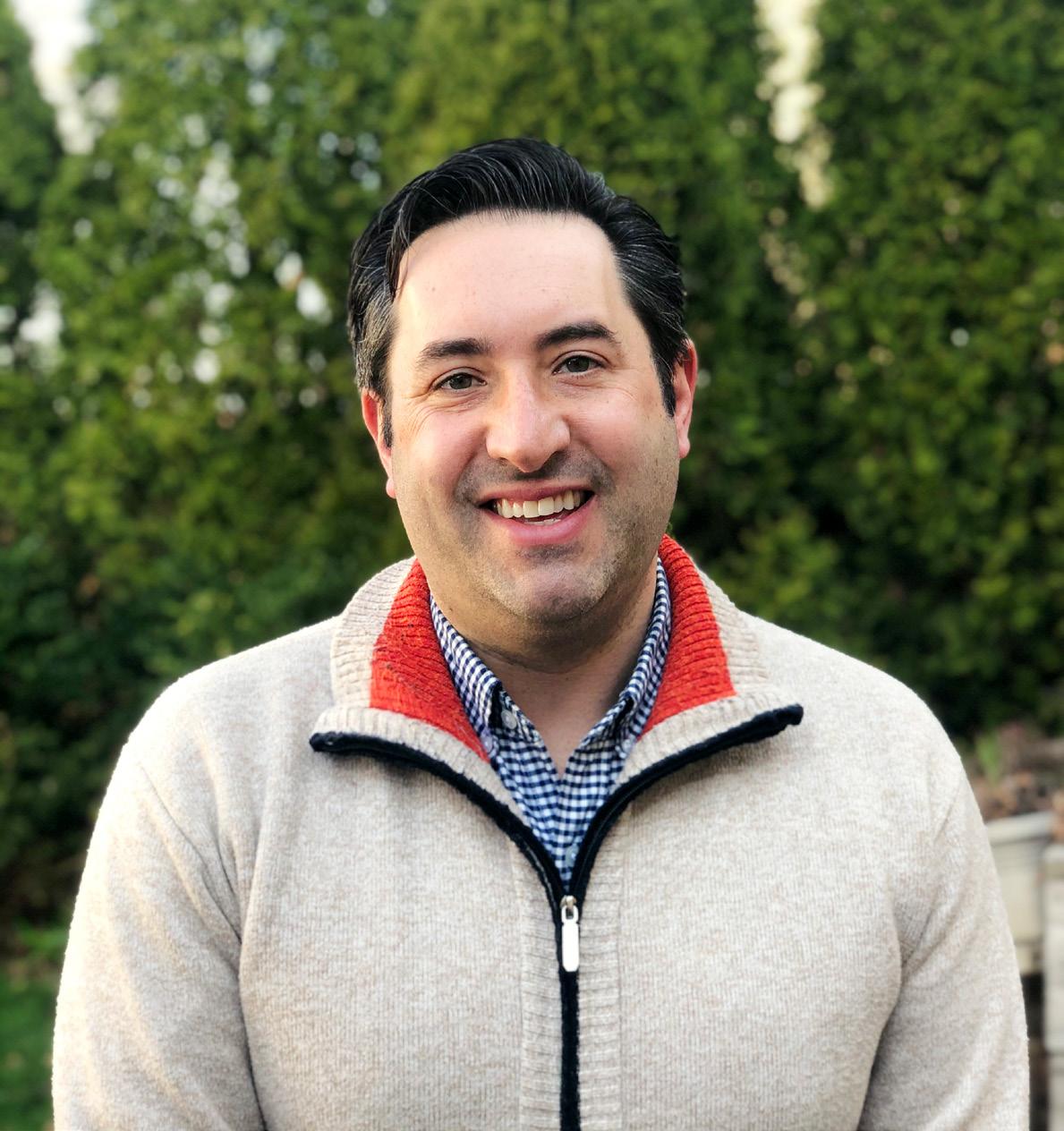 Christian Krautkramer Head of Law & Policy, Americas GE Healthcare Pharmaceutical Diagnostics
Christian Krautkramer Head of Law & Policy, Americas GE Healthcare Pharmaceutical Diagnostics
“You have to be a servant leader for your business clients. If you’re coming to them with an attitude that you already know what they need and what to do , you’re going to fail fast.”
“I hope that every day our team is lending our expertise to find opportunities and manage risk, and together with our business colleagues creating innovative solutions and driving results. I’m also really proud of how our leadership understands the value of doing things the right way,” he says. “It’s personally tremendously important to work for an organization where those at the top drive a culture in which integrity and ethics are paramount. It’s not just about what’s being said; it’s about what’s being done. I hope the partnership with our legal and compliance team has contributed to that mindset.”
GE Healthcare’s culture of integrity directly helps not only its business but also the greater community it serves. The company’s legal team has a history of strong pro bono efforts. Doing pro bono work has long been a part of Krautkramer’s own DNA, and he is part of a group within GE Healthcare that helps prioritize that work among its lawyers.
“After the challenges of 2020, this year GE and GE Healthcare have turned again to our long-standing commitment to pro bono work. We are focusing on a few areas: one is immigration. We’re deeply interested in make sure people coming to this country for the first time are treated fairly and justly,” Krautkramer explains.
“Another is veterans’ issues,” he continues. “We have a lot of employees within GE who are veterans, and we care deeply about making sure we help those who have given so much to our country. The third is education. For years we’ve worked with Street Law, supporting their national mission to promote understanding of law and government in the
classroom. Many of the students we work with come from diverse backgrounds, and there is no more important time than now to support their education about how they have equity in the American system.”
Last year, during the early stages of the COVID-19 pandemic, Krautkramer partnered with law firm DLA Piper on a project for the SeniorLAW Center in Philadelphia: they put together materials to help educate seniors on financial and medical products fraud associated with COVID.
“I’ve also worked with Wills for Heroes, which provides end-of-life documents and wills for Wisconsin’s first responders. It’s been an honor to support civil servants because we’re giving back to those folks who do a lot for us,” Krautkramer shares.
Beyond this pro bono work, in his new role as head of law and policy for the Americas, Krautkramer and his team are focusing on three key areas: accelerating growth, particularly in the company’s molecular imaging and radiopharmaceutical portfolio; localizing legal, compliance, and policy work to protect and advance business opportunities within each country; and investing in his team by focusing on their professional and personal development while improving their operating system to make sure the focus is on the most highvalue, rewarding work.
“I’m really trying to drive greater and more sophisticated education within our team,” he says. “I’m asking them to go deeper on their knowledge of regulatory issues and the specific areas in which we play. I think that make us stronger as individual lawyers but makes our business better too.” AHL

Magellan Health provides counseling for military families after a year of uncertainty and anxiety
 By Luke Fraber
By Luke Fraber
At its founding in 1969, Magellan Health was rooted firmly in behavioral and psychiatric care, and that tradition is alive and well in 2021. A survey conducted by Magellan sought to gauge the emotional and mental tax of a year plagued with social injustice, a pandemic, a bitter election, and the turmoil of millions being confined to their homes for more than a year.
That survey tracked a 42 percent increase in the healthcare company’s members seeking phone or videoconference coaching through their employee assistance programs compared to 2019. Additionally, there was a pronounced increase among members struggling to both manage stress and stay motivated.
Senior Medical Director Dr. Steven E. Pratt told the Washington Post that the tumultuous 1968, with multiple political assassinations, social upheaval, and mass police violence at the Chicago Democratic National Convention, was the only year he could recollect that had anything close to the fear, panic, and anxiety of 2020.
Much like the survey results found by Magellan, data and analysis play a critical role in any healthcare organization’s attempts to identify trends, forecast for the future, and learn from the past. Vice President of Data and Analytics Sonia Khosla has only been with Magellan for under a year, but at her previous employer, Tenet Healthcare, Khosla spent six years delivering synthesized data on a deadline. The VP and her team built custom dashboards that were used across the organization to illustrate everything from hospital capacity to supply inventory to trends for confirmed patients.
Khosla developed a reputation for her ability to apply the artful science of data analytics to help reduce spend, rationalize vendor activities, and provide a safe working environment. She
has been described as one whose ownership and ingenuity define her. Now, at Magellan, Khosla is applying her rigor to the demands of a healthcare population that is often highly specialized and whose data points may not be as traditionally well documented.
During a time when so many have found themselves under- or unemployed, unsure when or if they will have a job to return to, one of America’s most vulnerable and overlooked populations faced the prospect of suffering in silence. Issues related to both the Veterans Administration and their ability to administer proper care for the eighteen million veterans in the US always involve a divisive and contested discussion, especially when it comes to the far-too-long overlooked issue of behavioral and psychiatric support for those who have seen things they wish they could forget.
In March 2021, Magellan Federal, a subsidiary of the larger organization, was once again selected to serve as the contractor for the Military and Family Life Counseling (MFLC) program, which provides counseling for adults as well as children in the military community.
“We are honored that the government continues to trust in Magellan Federal’s performance and capabilities to deliver on the MFLC mission,” said Oscar Montes, CEO of Magellan Federal, in a prepared statement. “Our rotational, surge, and on-demand counselors, field leadership, and program management office staff are deeply committed to improving the mission readiness of our nation’s service members and their families through delivery of the highest-quality nonmedical counseling services.”
Magellan will deliver counseling services on bases across the eastern half of the US as well as at overseas installations in Europe and
Africa. A staff of more than 1,200 qualified counselors will provide services to “ensure readiness of the force, decrease distractions, and enhance the quality of life for service members and their families by helping them address life challenges such as relocation adjustment, mobilization, deployment stress, separation and homesickness, grief and loss, isolation, reunion, anxiety, and more.”
An entire wing of Magellan Health is dedicated to the needs of the armed services, and the organization also offers its employees a chance to connect to their communities through its Magellan Cares Foundation and program, which includes volunteer time off and matching gift programs. In 2018, Magellan employees volunteered more than seventeen thousand hours in thirty-six states and impacted more than 560 different organizations. That same year, the
healthcare organization’s matching fund dollars, which totaled nearly $70 million, benefited more than 152 organizations.

Along with those volunteer hours and matching contributions, Magellan Cares also provides grants to nonprofit organizations for initiatives that are aligned with its focus areas, including housing, food, clothing, and efforts to support veterans and active service members. In 2018, the Magellan Cares Foundation granted $560,000 to 130 organizations.
After a year that no one who experienced it will ever be able to forget, Magellan continues its proud tradition of serving those who need it most. Its commitment to not just the physical but the emotional and behavioral health of its members sets it apart for its foresight and commitment to evolving the concept of “living healthy.” AHL
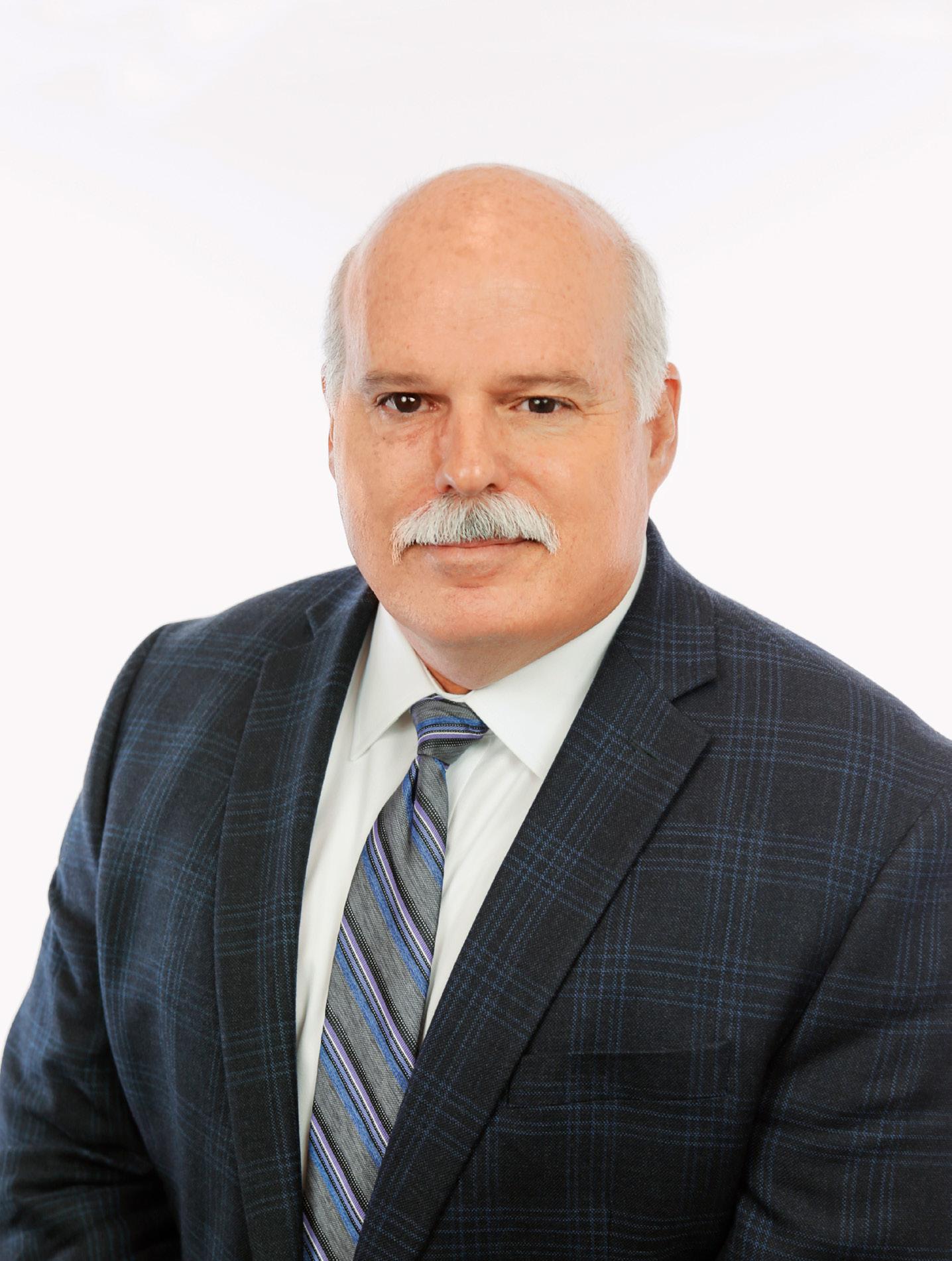 Kelly Summers SVP and CIO Valleywise Health
Kelly Summers SVP and CIO Valleywise Health
W hen Kelly Summers joined Valleywise Health in 2013, he’d already had a long career in healthcare IT and executive leadership. But Summers, who’s now senior vice president and chief information officer for Valleywise, began his professional life as a software engineer for a defense contractor, providing software solutions that were used in classified, high-altitude reconnaissance mission planning for the US Air Force. That background is still evident today: he still rises before dawn every day, and anyone who has had the privilege of working with him can recite his guiding principles: “We don’t do stupid,” and “Failure is not an option.”
“I’m so fortunate to have started off in aerospace working with the Air Force and just learning that kind of mission-critical operational discipline, that kind of rigor and process,” Summers says. His military association, with its emphasis on preparedness, helped fortify Valleywise Health’s IT department for the coronavirus pandemic.
Phoenix-based Valleywise Health (formerly Maricopa Integrated Health System) has a proud tradition of being a public safety net healthcare system with a mission and commitment to serving the underserved. It consists of three behavioral health hospitals, twelve community-oriented family health centers, and Valleywise Health Medical Center—Arizona’s only public teaching hospital and trauma center verified by the American College of Surgeons to treat both adults and children, as well as the only nationally verified burn center serving the entire Southwest. The health system was also named one of the top one hundred hospitals in the nation by IBM Watson Health in 2020.
For Summers, pre-pandemic preparedness included participating in emergency planning and drills. Back in 2017, he received support from the institution’s senior leadership and board of directors for his plan to prioritize a rebuilding of the IT infrastructure. The design of the foundation included a segmented network to optimize data protection, which means separate zones for information such as clinical data and patient information. What that
meant in a pandemic, Summers says, is that they were prepared from a technology perspective.
“When the pandemic hit, we had an IT infrastructure that was solid and robust that allowed us to adapt and pivot,” he says.
The critical mission for Summers at the start of the coronavirus outbreak was managing risk to the employees of Valleywise Health. “We had to transition about 15 percent of our workforce to remote spaces or enable a work-fromhome configuration,” he says. He led the secure set-up of entire functions (such as a call center) in homes and without patient disruption.
The next priority for his team became the establishment of telehealth visits, which Valleywise had never done before 2020. “We did in about a week what we’ve been trying to do in four years,” he says. In short order, they set up the technology to manage more than one hundred thousand telehealth visits in 2020. According to Summers, the key to the system’s success was focusing on enabling the video encounter through a tablet or phone, and not getting mired in the integration of telehealth with Valleywise’s electronic medical records system (EMR).
“Honestly, that was the accelerant because we didn’t go too complex,” he says. “We were very purposeful in picking a lightweight, easily-deployable-to-thepatient solution that also was very intuitive and easy for the provider to use.”
Providers, already familiar with how to use the EMR, continue to use the same
“When the pandemic hit, we had an IT infrastructure that was solid and robust that allowed us to adapt and pivot.”
system while treating their patients via videoconferencing. Another benefit of the technological infrastructure, which was in place before the pandemic, is the ease of reminding patients, via text and phone, about appointments such as vaccination dates. “Our job is to try to stay two steps ahead of our customers, and anticipate what they’re going to need,” Summers says.
In his opinion, future research will credit telehealth with improvement in patient outcomes because it increases access to medical caregivers by removing barriers such as transportation and time constraints. “I don’t believe that genie is going to go back in the bottle,” Summers notes. “I think telehealth is here to stay as a patient experience option.”

Summers embraces what he calls an open leadership style. “I try to lead the way I always wanted to be led,” he says. He also encourages staff and leadership to respectfully challenge a decision or direction. “That way, we really strive to not ‘do something stupid.’ We don’t want to make an easy mistake.”
His decision-making relies on metrics and another precept he enjoys, quoting from Peter Drucker, “If you can’t measure it, you can’t improve it.” He created a metric which he calls DQ, or deployment quality, which tracks changes to production environments such as software, infrastructure, and biomedical configuration changes or improvements.
DQ measures how many times changes had to be tweaked or reworked. A proud moment for Summers was the close of January 2021, when 311 changes were made in production and only 2 of them had to be revisited, making the DQ for that month a nearly perfect rating of
99 percent. “I’m almost awestruck with the quality and discipline of my team,” he says, praising their ability to quickly deploy quality solutions for specific clinical and business needs.
He also sings the praises of healthcare workers in the trenches at Valleywise Health and around the globe. “I think it’s a broad ambition for all our IT professionals in healthcare to be able to help and enable the true frontline healthcare heroes,” he says. “We just want to be good teammates and comrades with them.” AHL
“I don’t believe that genie is going to go back in the bottle. I think telehealth is here to stay as a patient experience option.”
Where do you start with your diversity, equity, and inclusion (DEI) efforts? Often diversity programs have a limited reach because they rely on outdated ideas that box people around shared identities.
People have complex, multifaceted identities and very rarely identify with just one group. To make DEI efforts successful—and for your entire workforce to feel a sense of belonging—it’s time to break from the norm. Boxes are for shoes, not for people.
The Ten Dials of Diversity is designed to help organizations define diversity in ways that are global and holistic. Leveraging this framework can accelerate the buy-in for corporate diversity and inclusion efforts. Consider the dials below to start your inclusion journey.
1
4
5
6
7
8

9
10
Start with a Solid Foundation
Framing diversity as holistic and dynamic ensures that your DEI efforts include and are of service to all employees. This will, in turn, prevent people from feeling alienated, organically increase support and engagement for future efforts, and expand coalitions of action. Starting here proves that every person is different and their uniqueness is valued.
Add additional dials to account for the needs of your business, employees, customers, or local factors. This will help deepen your corporate diversity network. In the US, for example, a focus on veteran hiring is a common additional dial and a key element of diversity.
Turn the dials up or down based on the needs of your business, employees, and market. Prioritize each category on a scale of one to ten—a ten denoting a higher emphasis on that area of diversity. This practice will allow you to create programs that are relevant to specific markets and are maximally impactful. You can build programs at a global level, seek rapid alignment at the local level, and maximize return on investment for the business itself.
Structure all your efforts around shared challenges to harness the power of intersectionality and enable groups to unite and solve shared problems. This creates a sense of belonging and ushers your diversity efforts into a highly dynamic, engaged state. The more you focus on the intersection of two dials, the larger your coalition of allies becomes.
We embrace the power of change to create 360° value by putting cloud at the core of your business. Our approach puts your business needs fi rst, creating industry-specifi c solutions to get you moved to—and benefi ting from—the cloud now. Learn more at accenture.com Let

Select the best.
